#sweet charity 1987 tour
Explore tagged Tumblr posts
Text



Debbie Allen, Ann Reinking, and Donna McKechnie as Charity Hope Valentine!!
more pics here
#sweet charity#sweet charity 1986#sweet charity 1987 tour#charity hope valentine#debbie allen#ann reinking#donna mckechnie
12 notes
·
View notes
Text
Broadway Divas Tournament: Semifinals
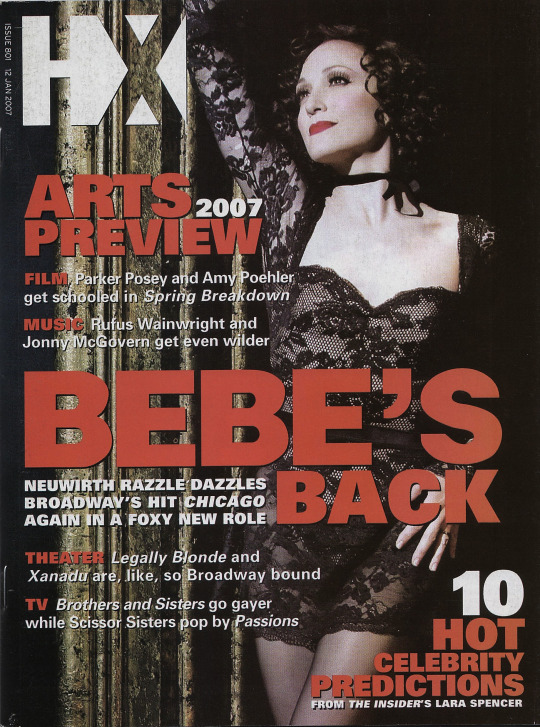

Two-time Tony-winning, newly three-time nominee, dancer-extraordinaire Bebe Neuwirth (1958) is best known for her winning role as Velma Kelly in Chicago (1996) alongside her beloved Annie Reinking. After playing Velma off-and-on for some years, she then took on Roxie, and later Matron "Mama" Morton. Bebe has also won for Sweet Charity (1986), and is a two-time Emmy winner for, of course, Lilith in Cheers. Other credits include Here Lies Jenny (2004), Fosse (2001), and Cabaret (2024), which opened to glowing reviews for Bebe, and dismal reviews for basically everything else. In addition to her beloved stage, Bebe is a devoted cat-lover, and activist. She founded the Dancers' Resource program to provide support for injured and/or aging dancers. She is *THE* living Dancing Diva of Broadway.
Seven-time Tony nominee, two-time winner Bernadette Peters (1948) has a sixty-plus year stage career of monumental proportions. Considered the foremost Sondheim interpreter, their collaborative works include Sunday in the Park with George (1984), Into the Woods (1987), Gypsy (2003), and Follies (2011). She has a thriving concert career, and was a co-founder of the beloved Broadway Barks event each year in Shubert Alley. She has an honorary third Tony (Isabelle Stevenson Award) for her outstanding advocacy and philanthropy. A true Broadway Baby at her core.
NEW PROPAGANDA AND MEDIA UNDER CUT: ALL POLLS HERE
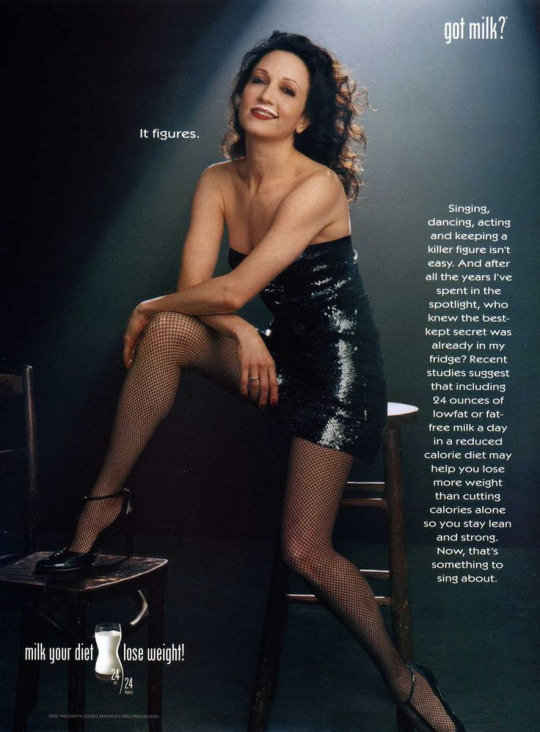
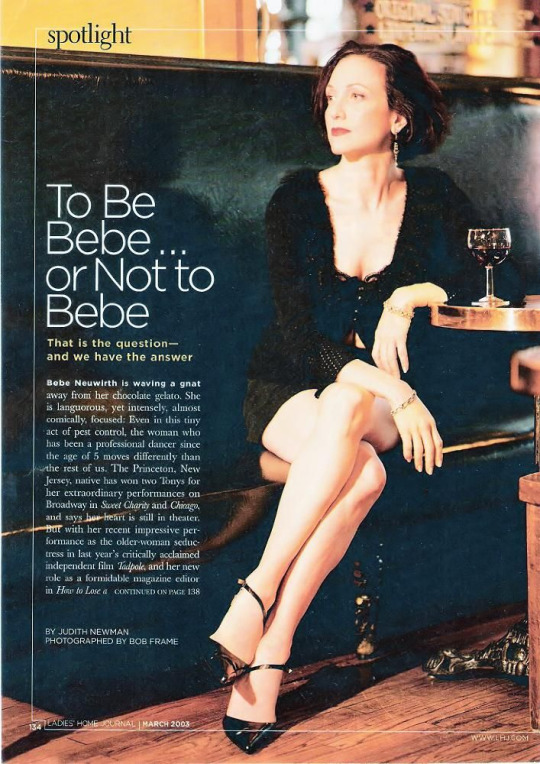

youtube
"Are you truly a Broadway Diva if you haven't appeared on the cover of the biggest queer magazine of its age? I am just over the moon with all the Bebe Neuwirth buzz going on now. She got her third Tony nomination for Cabaret, she's about to embark on a whirlwind press tour, she's the critic standout of that whole show. I need her in every magazine, newspaper, and photoshoot right now. And here she is, in the semifinals against the Bernadette Peters herself. She's swept every poll up until this point. It's been a lovely run."
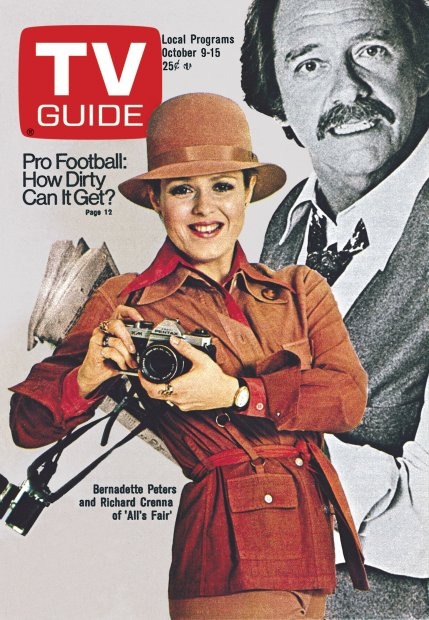
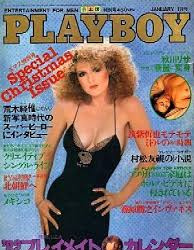
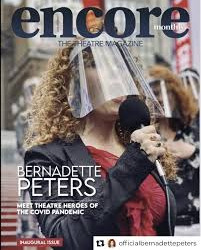
youtube
"I don't care that it's from a movie. This was my gay awakening. This song right here (along with "A Lovely Night"). At three years old, I saw this little redheaded bitch of a stepmother and decided, yeah, that's the blueprint. And it was. I proceeded to fall in love with Broadway Divas in movie musicals for the next few decades. I do love a petite, curly-haired, fair-skinned Diva with a unique voice... This poll hurts me personally because Bebe is my favorite and Bernadette was my first."
#broadwaydivastournament#broadway#tournament poll#broadway divas#musical theatre#bebe neuwirth#bernadette peters#semifinal round
76 notes
·
View notes
Text
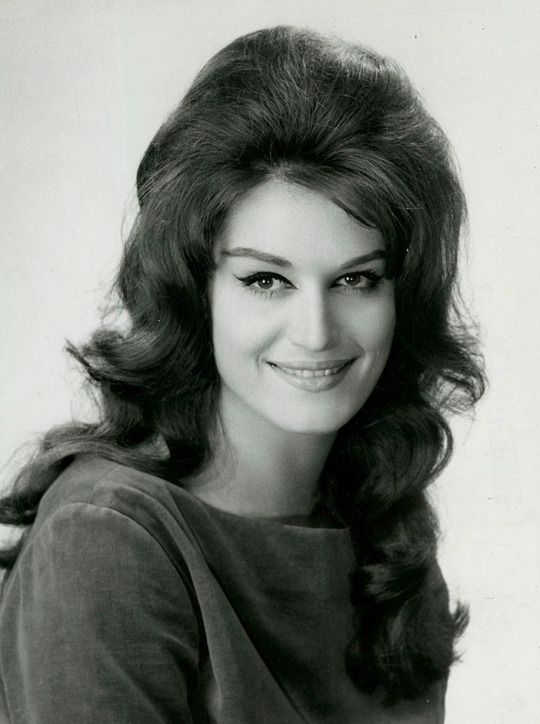
Dalida - The Beloved European Singer’s Calabrian Roots
Although she became famous worldwide as Dalida, she was born Iolanda Cristina Gigliotti in Cairo, Kingdom of Egypt, on 17 January 1933.
What is Dalida's Calabrian connection? Her father Pietro Gigliotti (1904–1945) and mother Filomena Giuseppina (née d’Alba; 1904–1971) were born in Serrastretta, Calabria, in Italy. Pietro studied music in school and played violin in taverns; Giuseppina was a seamstress.
Dalida was born in Egypt after her parents settled there, a move they made so that her father could pursue his career as a concert violinist.
By birth, Dalida automatically gained Italian nationality through jus sanguinis of both Italian parents.
Dalida singing the traditional Calabrian song "Calabrisella mia" (translation: "My sweet Calabrian girl") with actor John Dorelly on Italian national television:
She and her parents have maintained a strong bond with their roots over time, not only emotional, but also cultural and bureaucratic.
Dalida, in fact, even after moving to France, maintained her Italian citizenship and became French, with dual citizenship, only with her marriage to Lucien Morisse in 1961.
Dalida's visit to that small mountain town in Calabria, where her parents were born, Serrastretta, was unforgettable.
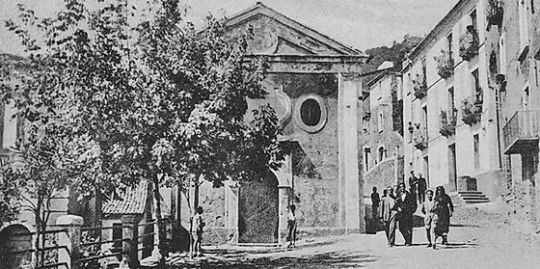
The singer decided to include an extra charity concert date in Catanzaro in her Italian tour, precisely to travel for the first time to the town that was the birthplace of her loved ones. Here she visited the house where her parents lived before moving to Egypt:
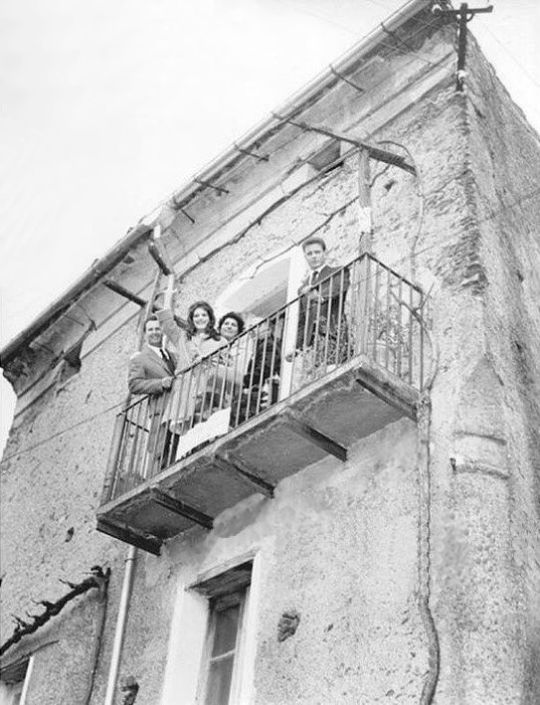
And she also met her cousins and her great-aunt who was still alive, played the tambourine and embraces the football team that bears his name.

The much idolized Dalida, the first woman to win the Platinum Record and for whom the Diamond Record was created, took to the stage of the Municipal Theatre of Serrastretta. All the newspapers talked about it. And at the moment of her departure from Sant'Eufemia station (modern Lamezia Terme), the tears flowed freely, so much so that a few days before the end of the tour, Dalida wrote to the mayor.
A shot that immortalizes Dalida's visit to the mountain village of Serrastretta, photographed next to the then mayor, Menotti Mancuso (1962)

«I would like to express to you again all the joy I felt in getting to know my family's town - wrote Dalida following a visit to Serrastretta in the 1960s -, and thank you for the warm and enthusiastic welcome you gave me. I will never forget the emotion I felt in finding myself among all of you and I ask you to pass on, both to my cousins and to all the inhabitants of Serrastretta, the thanks that come from the bottom of my heart."
Dalida in Calabria in 1962, photographed by Ezio Arcuri, upon arrival at the Sant'Eufemia Lamezia station (reportage archive)
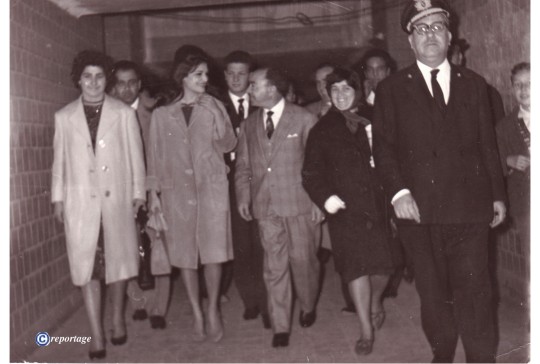
Dalida spent her early years in Egypt’s bustling Italian Egyptian community but she lived most of her adult life in France.
Beloved singer both in Italy and France, unforgettable queen of the Paris Olympia, during her career she sold over 170 million albums all over the world, also earning the first diamond record in history in 1981, created specifically for her.
Away from the spotlight, however, many great sorrows accompanied his life, which was interrupted - at the age of 54 - on 3 May 1987 by an overdose of barbiturates. «La vie m'est unbearable. Pardonnez moi/Forgive me, life is unbearable for me" wrote Dalida in her farewell note, found on the bedside table of her bedroom, in the villa at number 11 bis Rue d'Orchampt in Montmartre.
Follow us on Instagram, @calabria_mediterranea
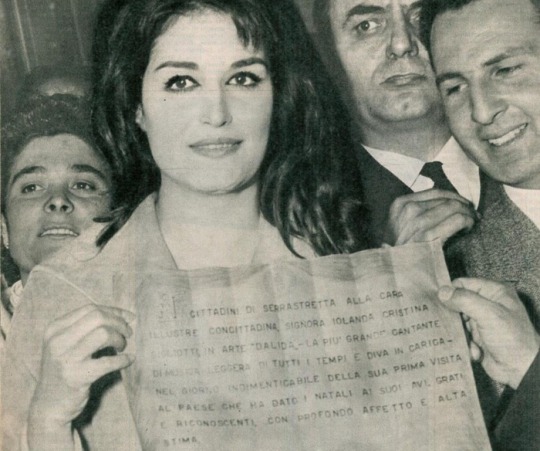
#dalida#calabria#italy#italia#south italy#southern italy#italian artist#italian artists#musica italiana#italian music#60s#60's#60's icons#europe#mediterranean#italian#music#french#50s#50's#1950s#1950's#1960s#1960's#serrastretta#lamezia terme#lamezia#johnny dorelli#french music#vintage photography
29 notes
·
View notes
Text
let's appreciate sweet charity's choreography some more! here's a cool video comparing the stage version's iconic opening, with her first appearing in silhouette, as danced by three different charitys
youtube
from the description: Immediately after the overture, Bob Fosse introduced the title character of "Sweet Charity" via a brief ballet to the tune of "Charity's Theme." Here is the opening dance with the original Fosse choregraphy and original Robert Randolph design, as performed by Debbie Allen (1986), Ann Reinking (1987), and Donna McKechnie (1987). Allen and Reinking were the two Charitys of the Tony-winning 1986 Broadway revival; McKechnie headlined the tour of that production.
here's gwen verdon, the original charity, pictured in the same scene


and if you happen to like whimsy and delight, here's the movie version of "i'm a brass band" with shirley maclaine as charity
youtube
613 notes
·
View notes
Photo

youtube
"We Belong Together" is a song by American singer Mariah Carey from her tenth studio album, The Emancipation of Mimi (2005). The song was released on March 29, 2005, through Island Records, as the second single from the album. "We Belong Together" was written by Carey, Jermaine Dupri, Manuel Seal, and Johntá Austin, and produced by the former three. Since the song interpolates lyrics from Bobby Womack's "If You Think You're Lonely Now" (1981) and the Deele's "Two Occasions" (1987), the songwriters of those respective songs are credited. "We Belong Together" is built on a simple piano arrangement with an understated backbeat. The lyrics chronicle a woman's desperation for her former lover to return.
Following her decline in popularity between 2001 and 2005, critics dubbed the song her musical comeback, as many had considered her career over. "We Belong Together" earned her several music industry awards and nominations throughout 2005–06. The song broke chart records in the United States and became Carey's sixteenth topper on the US Billboard Hot 100. After staying at number one for fourteen nonconsecutive weeks, it joined four other songs in a tie as the third longest running number one song in US chart history, behind Carey's own 1995 collaboration with Boyz II Men titled "One Sweet Day". Billboard listed it as the "song of the decade" and the fourteenth most popular song of all time. Additionally, it broke several airplay records, gathering both the largest one-day and one-week audiences in history. "We Belong Together" also topped the charts in Australia and reached the top five in Denmark, Hungary, Ireland, the Netherlands, New Zealand, Scotland, Spain, and the United Kingdom.
The song's music video was filmed as a two-part story with "It's Like That", which featured Carey at her bachelorette party. The video for "We Belong Together" is a continuation focusing on Carey's wedding to an older and powerful man and ends with the singer eloping with her ex-lover. Rumors arose of the video's connection to her 1993 marriage to Tommy Mottola. Carey performed the song on several award shows and television appearances around the world, namely MTV Movie Awards, MTV Video Music Awards, Macy's Fourth of July Parade, The Oprah Winfrey Show and the 48th Grammy Awards. In Europe the song was performed at the Live 8 charity concert, the Fashion Rocks in Monaco, and the German Bambi Awards. Carey performed the song while on The Adventures of Mimi Tour and the song has been on every tour set list since then.
5 notes
·
View notes
Text
A Lewisian Year
Presented in partnership with the Lewisia Communications Board and Lewisia Public Library
Sponsored by The Historical Society
Hello, readers, listeners, and psychic osmosizers! Welcome to A Lewisian Year, a monthly showcase celebrating the rich culture here in the Lake Lewisia district. Each month, we'll highlight some seasonal events, local celebrations and interpretations of national and world holidays, and historical tidbits.
MAY
The Grand Picnic
As you approach the lakeside, you can smell flowers before you can see them. The sweet scent hangs heavy in the air as you make your way around to the far shore. There, in the open space between the water and the edge of the surrounding forest, a whole line of long picnic tables already hold an assortment of covered dishes down the center. You add yours to the first free spot you find. Did you bring a salad of crisp spring greens, or a platter of smoky roasted meat, or a pie mounded high with whipped cream and candied violets?
All around the tables are flowers. The chiffon petals come in a riot of colors, some tiny as dewdrops and some large enough to serve as a blanket. Flowers on long stems rest in baskets. Daisies and cosmos, candy pink and butter yellow, form braided crowns, and one of the people running the setup drops a crown on your head as you pass by. More volunteers are in the trees, hoisting up long garlands of flowers to drape from branch to branch.
Down by the lake, huge rafts of flowers weigh down little boats. Once more people have arrived, the flower rafts are rowed out into deeper water and set adrift. From the shore, you can see a serpentine tail wrap around one and pull it into the depths. A few bubbly notes of lake monster voice sing gratitude. Other rafts drift slowly out of sight, to be enjoyed by other lake denizens. In the forest, deep in the shade of the trees, eyes watch and claws grasp, pulling flowers from garlands and spiriting them away.
Then we eat. Oh, we eat so much. Every specialty, every comfort food, every treat imaginable is there, brought by a neighbor or a coworker or a friend. Dishes hot and platters cold, mugs that steam and cups that fizz, pass from hand to hand along the tables. Everyone eats. Everyone is welcome. It's the Grand Picnic.
The Grand Picnic is the first major feast of the year. It celebrates May first, incorporating a number of May Day traditions into one local ritual. Sitting as it does between the lush growth of spring and the coming heat of summer, it is a celebration of meetings and mergings. It only makes sense, then, that the event always takes place on the far shore of the lake, where the water and the forest meet and where all the residents of Lewisia--human, cryptid, animal, and everything else--can come together.
Historical records are unclear on when the first Grand Picnic was held. It's possible it was never formally founded at all, rising instead organically over time from traditions of offering up food and the first flowers of spring to local spirits, personal deities, or hostile neighbors to foster goodwill over the coming year. Whatever its origins, the Grand Picnic seems to me to embody the spirit that defines Lewisia. Community is something we make together. Everyone brings what they can, and everyone gets a seat at the table, and everyone appreciates the good things this town gives to us.
Towel Day
May twenty-fifth marks Towel Day, a celebration of a certain infamous guidebook for travelers. Did you know, though, that Lewisia can boast authorship of another one of the great travel guidebooks?
Though long since out of print and supplanted by more recent books on the subject, Lewisia native Winifred Paisley penned the first edition of A Path Below: A Walking Tour of Underworlds and Afterlives in 1893. Several of the original illustration plates from the book, depicting cave systems, subterranean ferrymen, and roots of world trees, are held in the Historical Society's collection.
Buried Gardens Charity Auction
May has, for the last several years, been the occasion for the charity auction benefiting the Buried Gardens. Prior to their unplanned relocation, there had been several fundraisers for the original Sunken Garden plan, which helped make the initial groundbreaking and planting possible. Once they sunk, however, several new needs arose. The garden caretakers needed to be outfitted with spelunking equipment and educated on the care of the many new plants discovered to thrive in the darkness. One can hardly just toss some sunflower seeds down the cave shafts and hope for the best, after all.
The Buried Garden fund also provides support for the various creatures and entities introduced to the town when the garden connected to the network of existing tunnels down there. It is more than mere compensation for the disruption of their lifestyle, though that would have been reason enough. Discovering a whole understory of the town, populated by people who had come as refugees and existed under our feet and beneath our notice, demanded more response from the town than a covered dish and a polite "welcome to the neighborhood."
In addition to funding a worthy cause, the Charity Auction promises a night of dinner, entertainment, and a chance to go home with something marvelous. Highlights from previous auctions have including:
a selection of cave seeds suitable for growing at home (windowless bathrooms and closets recommended),
a romantic weekend in the guest quarters of the historic Beacon House,
various bioluminescent artworks crafted by the tunnel folk using traditional spore-based pigments,
and three teleporting hens of the Quicksilver Bantam variety, who may or may not have meant to appear on the auction stage at that moment but who have been living quite happily with the winner in any case.
I look forward to attending for the first time, along with some of my sister initiates. I'm technically there for cultural education purposes. If I happen to bring a little spending money with me, well, it's for a good cause. And you never know what might appear on the auction block this year.
This Month in History
The Rocky Head Beach Riots began on May 13th, 1987, prompted by a group of outsider teens spying young Lewisians performing minor conjurations, and lasted another three days. The riot prompted the involvement of two sheriff departments, the Marguerite County Department of Parks and Recreation, and at least one still-unidentified school of magical practice. While no one was killed during the riots, several nonfatal curses were obtained, and a significant amount of damage to local wildlife habitat required replanting work.
The incident prompted more stringent guidelines for young Lewisians when interacting with outsiders. As Rocky Head Beach is the closest and most accessible beach area to Lewisia proper, it is a popular spot for residents to visit. Being outside of Lewisia's domain, however, and equally popular with many other people, the area has potential for such mishaps. The possibility of becoming an Encounter for an outsider, someone shocked and amazed by the most mundane facts of life in Lewisia, may be enticing, but Encounters can become Incidents all too easily.
That's a taste of what May has to offer us. See you next month, when June brings bonfires, fireworks, and a serious need for sunscreen.
#fiction#microfiction#magical realism#holidays#history#May#Lake Lewisia#demifiction#A Lewisian Year#bonus material
1 note
·
View note
Photo
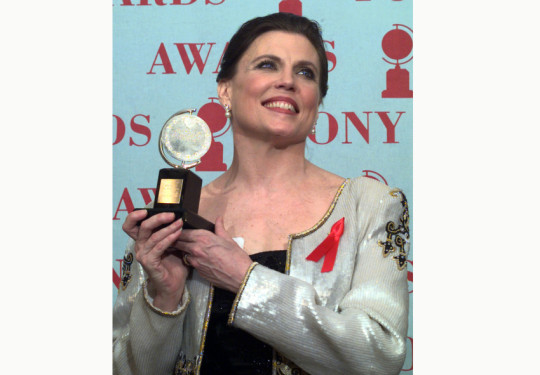
Tony-winning choreographer, actress Ann Reinking dies NEW YORK
Ann Reinking, the Tony Award-winning choreographer, actress and Bob Fosse collaborator who helped spread a cool, muscular hybrid of jazz and burlesque movement to Broadway and beyond, has died. She was 71.
Reinking died in her sleep Saturday while visiting family in Seattle, said her manager, Lee Gross.
Tributes poured in from the Broadway community, including from Tony Yazbeck, who called her “an absolute inspiration” and Leslie Odom, Jr., who thanked Reinking for being a mentor: “She honored the calling for real. RIP to a legend.” Bernadette Peters took to Twitter to say her heart was broken and Billy Eichner said she was “one of the most mesmerizing people I’ve ever seen on stage. A singular genius. RIP.”
Trained as a ballet dancer, Reinking was known for her bold style of dance epitomized by her work in the revival of the Kander and Ebb musical “Chicago,” complete with net stockings, chair dancing and plenty of pelvic thrusts.
Reinking co-starred as Roxie Hart along with Bebe Neuwirth’s Velma, and created the choreography “in the style of Bob Fosse,” the show’s original director and choreographer who died in 1987. She and Fosse worked together for 15 years and she was also his lover for several of them.
Her work on “Chicago” earned her a 1997 Tony, Drama Desk and Outer Critics Circle awards. Reinking replicated its choreography in productions throughout the world — England, Australia, Austria, Sweden, the Netherlands and elsewhere. She was portrayed by Margaret Qualley in the recent FX series “Fosse/Verdon.”
The musical’s revival was first done in a concert version at City Center’s “Encores” series in 1996 and then moved to Broadway, where in 2011 it became the second longest-running show in Broadway history.
“You know how you hear sometimes a woman goes into labor and 10 minutes later she’s got this beautiful baby? You couldn’t believe that it was materializing in such a beautiful way,” she told The Associated Press in 2011 about the early days of the revival.
In 1998, she co-directed “Fosse,” a salute to the man who had the largest influence, both professionally and personally, on her life. He once called her “one of the finest dancers in the jazz-modern idiom.”
Her movie credits include “Annie” (1982), “Movie, Movie” (1978) and the documentary “Mad Hot Ballroom” (2005), which portrayed Reinking as a ballroom-dance competition judge for New York City kids.
Reinking’s career began in Seattle, where she grew up. In the beginning, she wanted to be a ballet dancer, “like all girls,” she said. As a student, she won a scholarship in San Francisco with the Joffrey Ballet, but at many of the students’ after-hours improvisations, she would just sing and not dance.
Robert Joffrey said that with her outgoing personality and other abilities, she should pursue musical theater. “I waited tables to save up enough money to get here,” she said of New York City, where she arrived with a round-trip ticket back to Seattle and $500. She didn’t need the return trip.
“You wouldn’t get into this if you had a guarantee. People who get into this have a certain sense of the high stakes,” she said. “You need the break and when you get it, you’d better be ready for it.”
Reinking’s break was strung out over several shows. She was in the ensemble for Broadway’s “Coco,” which starred Katharine Hepburn as Coco Chanel, in 1969, and was in the chorus of “Pippin” in 1972, picked by its director and choreographer, Fosse. The ensemble was so small — there were only eight — that the dancers were really seen.
Choreographer Pat Birch was one who noticed, and in 1974 put her in “Over Here,” a World War II musical starring two of the three Andrews Sisters and featuring another unknown, John Travolta.
It led to a starring role in “Goodtime Charley,” a musical about Joan of Arc opposite Joel Grey. The musical was not a success, but it did make theatergoers look at Reinking as a principal performer and not just a member of the chorus.
Her other big break, she said, was in “Dancin’” in 1978, “because I realized you had to be in an original part and that show has to be a hit.” The music-and-dance revue directed and choreographed by Fosse was, running more than three years and earned her a 1978 Tony nomination.
But it was her work on the revival of “Chicago” where Reinking basked in the most attention. The original, a dark indictment of celebrity and hucksterism, opened in the summer of 1975 and ran for about 900 performances. Though not in the opening night cast, Reinking eventually slipped into the role of Roxie Hart, taking over the part from Gwen Verdon, Fosse’s third wife and dancing alter ego. In the 1996 revival, which is still on Broadway, Reinking kept the part of Hart opposite Gray and Neuwirth.
Reinking also gained experience — and stayed in shape — by replacing stars in hit shows: Donna McKechnie in “A Chorus Line”; Gwen Verdon in Fosse’s original “Chicago”; and Debbie Allen in the 1986 revival of “Sweet Charity.”
And she embarked on an eclectic film career — from playing Roy Scheider’s lover in Fosse’s 1979 semi-autobiographical film “All That Jazz,” to the screen version of “Annie” to Blake Edwards’ “Micki and Maude.”
She also created dances for a revival of “Pal Joey” at Chicago’s Goodman Theater and a musical about first lady Eleanor Roosevelt called “Eleanor.” She was on the national tour of “Bye Bye Birdie” opposite Tommy Tune.
After “Eleanor,” offers to choreograph “kept falling in my lap,” Reinking said. She created dances for a pre-Encores “Chicago” in Long Beach, California, with Neuwirth and Juliet Prowse.
In one of the more cringe-worthy moments in her career, Reinking was asked to sing and perform the Oscar nominated song “Against All Odds” by Phil Collins at the 1985 telecast. Reinking lip-synched as she danced a bombastic, cheesy rendition marred by fog.
In recent years, she choreographed “The Look of Love” on Broadway and the Roger Rees-directed off-Broadway “Here Lies Jenny” (2004), starring Neuwirth. In 2011, she helped choreograph “An Evening with Patti LuPone and Mandy Patinkin” on Broadway.
Reinking also produced a documentary called “In My Hands,” about working with children of Marfan’s Syndrome, a rare genetic disorder of the connective tissues that often leaves its victims with limbs that are disproportionately long. She also produced the film “Two Worlds, One Planet,” about “high-functioning” autism.
Reinking’s first three marriages ended in divorce. Since 1994, she had been married to Peter Talbert. She also is survived by a son, Christopher, who has been diagnosed with Marfan syndrome and autism.
“If there is a heaven, I think Bob can look down and be satisfied. He really did have an exponential effect on the next generation of choreographers and dancers,” Reinking once said.
“He demanded the best from you and you wanted to give it. So you got better. All great directors — however, they do it — make you want to be good. I hope I do it. It’s like being a parent, a psychiatrist, a disciplinarian and a friend. You really have to know when to hold them and when to show them.”
2 notes
·
View notes
Text
Billy Preston

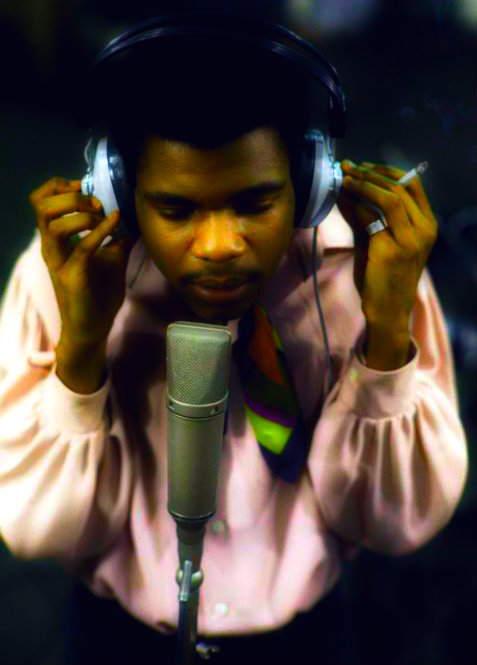
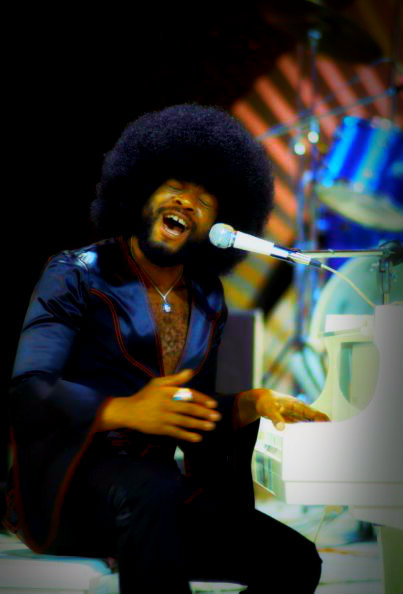


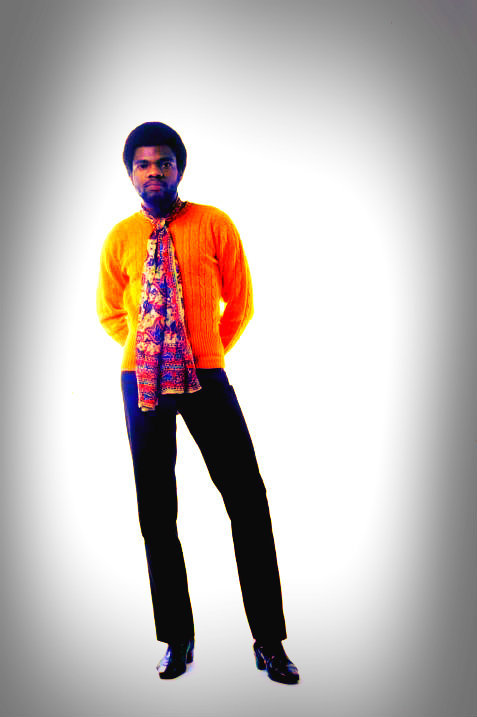

William Everett (Billy) Preston (September 2, 1946 – June 6, 2006) was an American musician whose work included R&B, rock, soul, funk and gospel. A virtuoso keyboardist, particularly on Hammond organ, Preston was recognized as a top session musician in the 1960s, during which he backed artists such as Little Richard, Sam Cooke, Ray Charles and the Beatles. He then went on to achieve fame as a solo artist, with hit pop singles including "That's the Way God Planned It", "Outa-Space", "Will It Go Round in Circles", "Space Race", and "Nothing from Nothing". In addition, Preston co-wrote "You Are So Beautiful", which became a number 5 hit for Joe Cocker, and Stephen Stills asked Preston if he could use his phrase "if you can't be with the one you love, love the one you're with" and created the hit song.
Preston was the only musician to be credited on a Beatles recording other than the group's four members: the group's number-one hit "Get Back" billed as "The Beatles with Billy Preston". Preston continued to record and perform with other artists, notably George Harrison after the Beatles' break-up, and Eric Clapton, and he played keyboards for the Rolling Stones on many of the group's albums and tours during the 1970s.
Early life and career
Preston was born on September 2, 1946 in Houston. When he was three, the family moved to Los Angeles, where Preston began playing piano while sitting on his mother Robbie's lap. Noted as a child prodigy, Preston was entirely self-taught and never had a music lesson. By the age of ten, Preston was playing organ onstage backing several gospel singers such as Mahalia Jackson, James Cleveland and Andraé Crouch. At age eleven, Preston appeared on Nat King Cole's national TV show singing the Fats Domino hit, "Blueberry Hill" with Cole. Also at eleven, he appeared in the W.C. Handy biopic starring Nat King Cole:St. Louis Blues (1958), playing W.C. Handy at a younger age.
In 1962, Preston joined Little Richard's band as an organist, and it was while performing in Hamburg that Preston met the Beatles. In 1963, he played the organ on Sam Cooke's Night Beat album and released his own debut album, 16 Yr Old Soul, for Cooke's SAR Records label. In 1965, he released the album The Most Exciting Organ Ever and performed on the rock and roll show Shindig! In 1967, he joined Ray Charles' band. Following this exposure, several musicians began asking Preston to contribute to their sessions.
Relationship with the Beatles
Preston first met the Beatles as a 16-year-old in 1962, while part of Little Richard's touring band, when their manager Brian Epstein organized a Liverpool show, at which the Beatles opened. The Washington Post explained their subsequent meeting:
Preston is one of several people referred to as the "Fifth Beatle". At one point during the Get Back sessions, John Lennon proposed the idea of having him join the band (to which Paul McCartney countered that it was difficult enough reaching agreements with four). Preston played with the Beatles for several of the Get Back sessions, some of the material from which would later be culled to make the film Let it Be and its companion album. Preston also accompanied the band for its rooftop concert; the group's final public appearance. In April 1969, their single "Get Back" was credited to "The Beatles with Billy Preston", the only time such a joint credit had been given on an official Beatles-sanctioned release (as distinct from an unsanctioned reissue of some Hamburg-era recordings on which they were the backing group for Tony Sheridan). The credit was bestowed by the Beatles to reflect the extent of Preston's presence on the track; his electric piano is prominent throughout and he plays an extended solo. Preston also worked, in a more limited role, on the Abbey Road album, contributing to the tracks "I Want You (She's So Heavy)" and "Something".
In 1978, he appeared as Sgt. Pepper in Robert Stigwood's film Sgt. Pepper's Lonely Hearts Club Band, which was based on the Beatles' album of the same name, and sang "Get Back" as the penultimate song.
Post-Beatles solo career
Signed to the Beatles' Apple Records label, in 1969, Preston released the album That's the Way God Planned It, produced by Harrison, the title song from which was a hit single in Britain. His relationship with Harrison continued after the Beatles' break-up in 1970; Preston was the first artist to record Harrison's subsequent international hit "My Sweet Lord", on his 1970 album Encouraging Words, which Harrison co-produced with Preston. He appeared on several of Harrison's 1970s solo albums, starting with All Things Must Pass; made a notable contribution to the Concert for Bangladesh, the Harrison-organized 1971 charity benefit; performed with the ex-Beatle on his 1974 tour of North America; and played at the 2002 Concert for George tribute, held at London's Royal Albert Hall. Preston also worked on solo releases by Lennon and Ringo Starr.
In 1971, Preston left Apple and signed with Herb Alpert's A&M Records. The previous year, he contributed to another hit single when Stephen Stills asked to use Preston's phrase "if you can't be with the one you love, love the one you're with", a song on Stills' self-titled debut solo album.
Following the release of I Wrote a Simple Song on A&M, Preston's solo career peaked at this time, beginning with 1972's "Outa-Space", an instrumental track that further popularized the sound of the clavinet in funk music. The song reached number 2 on the USBillboard Hot 100 and topped Billboard's R&B chart, before going on to win the Grammy Award for Best Pop Instrumental Performance. "Outa-Space" sold over 1 million copies in America, and was awarded a gold disc by the RIAA in June 1972.
Over the next two years, Preston followed up with the US chart-topping singles "Will It Go Round in Circles" and "Nothing From Nothing", and the number 4 hit "Space Race". Each of the three singles sold in excess of 1 million copies. American Bandstand host and executive producer Dick Clark enjoyed "Space Race" so much that he used the instrumental for the mid-show break for virtually the remainder of its run.
From 1970, Preston played keyboards (including piano, organ, clavinet and various synthesizers) for the Rolling Stones, sometimes alongside pianists Nicky Hopkins and Ian Stewart, on their albums Sticky Fingers, Exile on Main St, Goats Head Soup, It's Only Rock 'n Roll and Black and Blue. As the band's primary touring keyboardist from 1973 to 1977, he also performed as a support act with his own band (including Mick Taylor on guitar) on their 1973 European Tour. A Munich performance was documented in the live albumLive European Tour 1973. In 1974, along with Beach Boy Dennis Wilson, he composed one of Joe Cocker's biggest hits, "You Are So Beautiful". On October 11, 1975, he was the first musical guest on Saturday Night Live's series premiere episode (along with Janis Ian). Preston's 1973 song "Do You Love Me" was the basis for the Rolling Stones' track "Melody", released on Black and Blue in 1976. Although two of his songs ("Nothing from Nothing" and "Outa-Space") were included in the band's 1976 live sets, the Stones and Preston parted company in 1977, mainly due to a disagreement over money. He continued to play on solo records by Stones members and made appearances on the band's 1981 Tattoo You and 1997 Bridges to Babylon albums.
Preston's solo career began to decline after 1976. After five years with A&M, he signed with Motown Records. In 1980, he duetted with Syreeta Wright on the ballad "With You I'm Born Again", which reached number 4 on the charts in the US. Failing thereafter to match its success, Preston left Motown in 1984 and focused on session work. He served as musical director for Nightlife, a late-night talk show hosted by David Brenner that lasted one season from 1986 – 1987.
Legal troubles
In 1991, Preston was arrested and convicted for insurance fraud after setting fire to his own house in Los Angeles, and he was treated for alcohol and cocaine addictions. In the same year, he was also arrested for sexually assaulting a 16-year-old Mexican boy, after picking him up at a gathering point for day laborers. After submitting to a drug test, he tested positive for cocaine. That year, he entered no-contest pleas to the cocaine and sexual assault charges. He was sentenced to nine months at a drug rehabilitation center and three months of house arrest.
Preston overcame his problems in the early 1990s, toured with Eric Clapton, recorded with Gary Walker, one of the vocalists in his Los Angeles-based band, and worked with a wide range of other artists. He also toured with Ringo Starr and appeared on the 1990 live album Ringo Starr and His All-Starr Band. He was invited to become a member of The Band in 1991, after the death of piano player Stan Szelest. He performed on tour with the group, but the sentencing from his cocaine and sexual assault charges ended the collaboration.
Later work
In 1997, Billy Preston recorded the album You and I, in Italy, with Italian band Novecento. The album was produced by Vaughn De Spenza and Novecento members Lino and Pino Nicolosi.
In 1998, Preston played organ during the choir numbers on the UPN comedy show Good News. The same year he sang and played synthesizer in the film Blues Brothers 2000, as part of the super group, The Louisiana Gator Boys.
While touring and fighting his own health problems, Preston received the news that on November 29, 2001, George Harrison had died (having long suffered from throat cancer). Preston, among many of Harrison's longtime friends, performed in the 2002 Concert for George at the Royal Albert Hall in London. Preston's performance of "My Sweet Lord" received critical acclaim. Additionally, Preston sang "Isn't It a Pity", provided backing vocals on most of the other songs, and played the Hammond organ for the show. Ringo Starr called him one of the greatest Hammond players of all time (in the theatrical version of the concert).
In 2002, Preston appeared on the Johnny Cash album American IV: The Man Comes Around, playing piano on "Personal Jesus" and "Tear-Stained Letter".
In 2004, Preston toured with the Funk Brothers and Steve Winwood in Europe, and then with his friend Eric Clapton in Europe and North America. After he finished touring with Clapton, Preston went to France, where he was featured in one episode of the Legends Rock TV Show. His performance included a duet with Sam Moore singing "You Are So Beautiful"; this was Preston's last filmed concert.
In 2004, Preston performed as a jazz organist on Ray Charles' Genius Loves Company, an album of duets, on the song "Here We Go Again" with Charles and Norah Jones.
In March 2005, Preston appeared on the American Idol fourth season finale. Playing piano, he performed "With You I'm Born Again" with Vonzell Solomon (who finished the contest in third place). The same year, he recorded "Go Where No One's Gone Before", the main title song for the anime series L/R: Licensed by Royalty.
Preston played clavinet on the song "Warlocks" for the Red Hot Chili Peppers album Stadium Arcadium (2006). Although very ill by this point, he jumped out of his bed after hearing a tape of the song given to him by the band, recorded his part, and went back to bed.
Preston's final recorded contributions were the gospel-tinged organ on the Neil Diamond album 12 Songs (2005), and his keyboard work on The Road to Escondido (2006) by Eric Clapton and JJ Cale.
In late 2005, Preston made his last public performance, in Los Angeles, to support the re-release of the 1972 movie The Concert for Bangladesh. Preston played a three song set of "Give Me Love", "My Sweet Lord", and "Isn't It a Pity", with Dhani Harrison and Ringo Starr joining on guitar and drums respectively for the last song.
Personal life
Billy Preston was brought up in the African-American gospel tradition; he was a committed Christian throughout his life and he openly expressed his faith in works such as his 1970s hit "That's the Way God Planned It". However, his personal beliefs were sometimes at odds with the attitudes and musical expressions of the secular world of rock & roll in which he often worked - while he was apparently willing to put his religious views aside when working on tracks like John Lennon's openly atheistic song "God", he was reported to have been particularly uncomfortable with having to perform "Sympathy for the Devil" while touring with the Rolling Stones in the early 1970s. Preston was also deeply attached to his mother, for whom he wrote the song that became his best-known composition, "You Are So Beautiful".
Although the details did not become fully known to the general public until after his death, Preston struggled throughout his life to cope with his sexual orientation, and the lasting effects of the traumatic sexual abuse he suffered as a boy. Although his homosexuality became known to friends and associates in the music world (such as Keith Richards) Preston did not publicly come out as gay until just before he died. This was reportedly partly due to the fact that Preston felt that his sexual orientation conflicted with his deeply held religious beliefs and his lifelong association with the church, so he remained "in the closet" until shortly before his death. Keith Richards' autobiography, Life, mentions Billy Preston's struggles with his sexuality.
In an interview for a 2010 BBC4 radio documentary on his life and career, Preston's manager Joyce Moore revealed that after she began handling his affairs, Preston opened up to her about the lifelong trauma he had suffered as the result of being sexually abused as a boy. Preston told Moore that at about the age of nine, after he and his mother moved to Los Angeles from Houston to perform in a touring production of Amos 'n' Andy, he was repeatedly abused by the touring company's pianist. Preston told his mother about the abuse, she did not believe him, and failed to protect him. The abuse subsequently went on for the entire summer, and Preston stated that he was also later abused by a local pastor.
Another traumatic incident, which reportedly affected Preston deeply, occurred in the early 1970s, while he was engaged to actress/model Kathy Silva. At this time Preston had become close friends with musician Sly Stone, and made many contributions to Stone's recordings of the period (including the landmark album There's a Riot Goin' On). According to Moore, Preston was devastated when he came home one day to find Stone in bed with Silva (who later famously married Stone on stage at Madison Square Garden). According to Moore, Silva's affair with Stone was the trigger that led Preston to stop having relationships with women - it was after this incident that he began abusing cocaine and having sex with men, and Moore has stated that she saw his drug abuse as his a way of coping with the internal conflicts he felt about his sexual urges.
Preston lived in London for a time, possibly around 1969-1971, but he moved back to the USA in the early 1970s.
Miles Davis's album Get Up with It (1974) features a track called "Billy Preston" in his honor.
Death
Preston had battled kidney disease in his later years, brought on by his hypertension. He received a kidney transplant in 2002, but his health continued to deteriorate. He had voluntarily entered a drug rehabilitation clinic in Malibu, California, at the suggestion of guitarist Is'real Benton, and suffered pericarditis there, leading to respiratory failure that left him in a coma from November 21, 2005. Preston died on June 6, 2006, in Scottsdale, Arizona, of complications of malignant hypertension that resulted in kidney failure and other complications. His funeral was held on June 20 at the Faithful Central Bible Church in Inglewood, California, where his remains were interred at Inglewood Park Cemetery.
Discography
Studio albumsStudio EPLive album
1974: Live European Tour 1973 (A&M Records)
Gospel albums
1965: Hymns Speak from the Organ (Exodus Records, EX-53)
1973: Gospel in My Soul (reissue of Hymns Speak from the Organ)
1978: Behold! (Myrrh Records, MYR-1070)
1980: Universal Love
1994: Ministry of Music (D&K Records, D&K 86003)
1996: Words and Music
2001: Music from My Heart
Charted albums
Footnotes: 1 Charted in 1972
SinglesAs a guest/session performer
1963: Night Beat (Sam Cooke)
1969: "Get Back" and "Don't Let Me Down" (The Beatles)
1969: Abbey Road (The Beatles)
1970: Let It Be (The Beatles)
1970: All Things Must Pass (George Harrison)
1970: John Lennon/Plastic Ono Band (John Lennon) – piano on "God"
1971: Sticky Fingers (The Rolling Stones)
1971: The Concert for Bangladesh (George Harrison and Friends)
1971: There's a Riot Goin' On (Sly and the Family Stone)
1971: Live at Fillmore West (King Curtis and Aretha Franklin)
1971: Barbra Joan Streisand – keyboards and drums
1972: Exile on Main Street (The Rolling Stones)
1972: Wind of Change (Peter Frampton) – piano, keyboards, harpsichord, accordion
1973: Ringo (Ringo Starr) – Organ on "I'm the Greatest" and "Oh My My"
1973: Goats Head Soup (The Rolling Stones)
1974: Dark Horse (George Harrison) – electric piano
1974: Goodnight Vienna (Ringo Starr) – clavinet on the title track, electric piano on "Only You (And You Alone)"
1974: It's Only Rock 'n' Roll (The Rolling Stones)
1975: "You Are So Beautiful" (Joe Cocker)
1975: Extra Texture (Read All About It) (George Harrison) – electric piano on "His Name Is Legs (Ladies And Gentlemen)"
1976: Thirty Three & 1/3 (George Harrison)
1976: No Reason to Cry (Eric Clapton)
1976: Black and Blue (Rolling Stones)
1976: Love You Live (Rolling Stones)
1978: Sgt. Pepper's Lonely Hearts Club Band – also acted the part "Sgt. Pepper" in the film
1981: Tattoo You (Rolling Stones)
1982: Gone Troppo (George Harrison)
1985: "Till My Baby Comes Home" (Luther Vandross) – Plays organ
1986: "Great Gosh A'Mighty (Been a Long Time Comin')" – co-written with Little Richard – from the film Down and Out in Beverly Hills (sung by Little Richard)
1990: Ringo Starr and His All-Starr Band – keyboards and vocals
1990: Giovani Jovanotti (Jovanotti) – keyboards and Fender Rhodes
1990: "Show Me Your Soul" - Red Hot Chili Peppers
1991: ...E La Vita Continua (Nino D'Angelo)
1993: Wandering Spirit (Mick Jagger) – "Sweet Thing", "Out of Focus", "[[Use Me (Bill Withers song)|Use Me]]", "Wandering Spirit" and "I've Been Lonely for So Long".
1996: Voyage of Dreams – Jephté Guillaume and the Tet Kale Orkestra – organ, strings on "Al Di Yo", "Go Tell Them", "Kanpe", "Get Up"
1996: Donnie McClurkin (Donnie McClurkin) – organ
1996: Love Brought Me Back (Helen Baylor) – organ
1996: El Equilibiro de los Jaguares (Jaguares) – organ /Hammond B3 on "Detrás de los Cerros"
1996: Peace Beyond Passion (Me'shell Ndegeocello) – keyboards on "Deuteronomy: Niggerman"
1997: Bridges to Babylon (The Rolling Stones) – organ on "Saint of Me"
1998: Undiscovered Soul (Richie Sambora)
2000: The Harsh Light of Day (Fastball) – keyboards on "You're An Ocean"
2001: Songs from the West Coast (Elton John) – Hammond organ on "I Want Love", "The Wasteland", "Love Her Like Me"
2001: Everybody Got Their Something (Nikka Costa) – Clavinet
2001: Reptile (Eric Clapton)
2001: One More Car, One More Rider (Eric Clapton, live) – DVD includes live performance of Will It Go Round in Circles
2002: Travelogue (Joni Mitchell) – Hammond B3 on the track "You Dream Flat Tires"
2002: American IV: The Man Comes Around (Johnny Cash) – piano on "Tear Stained Letter" and "Personal Jesus"
2003: The Colored Section (Donnie) – Hammond B3 on the last track: "The Colored Section"
2003: Concert for George – including "Isn't It a Pity" and "My Sweet Lord"
2003: Get Born (Jet)
2004: Me and Mr. Johnson (Eric Clapton) – also appears in the DVD companion Sessions for Robert J
2004: Crossroads Guitar Festival (Eric Clapton)
2004: Genius Loves Company (Ray Charles)
2005: 12 Songs (Neil Diamond)
2005: Back Home (Eric Clapton)
2005: Choose Love (Ringo Starr)
2005: The Concert for Bangladesh (George Harrison and Friends) (re-mastered version and video)
2005: Tough on Crime (Rebecca Pidgeon) – keyboards
2006: Stadium Arcadium (Red Hot Chili Peppers) – "Warlocks"
2006: The Road to Escondido (Eric Clapton]], J. J. Cale)
2006: Overnight Sensational (Sam Moore) - Hammond B3 on "I Can't Stand the Rain" and sings and plays on "You Are So Beautiful"
2007: Reach (Is'real Benton) – organ on "Have a Good Time"
2007: Imagine (Howard Hewett) – organ
Wikipedia
7 notes
·
View notes
Text
Madonna Songs Mp3

Madonna songs list and albums. This is the list of songs and Albums by Madonna Louise Ciccone, an American singer, songwriter, actress, and businesswoman who is regarded as one of the most famous and successful performing artists in the world. Madonna’s “Sticky & Sweet Tour” is the fifth-highest-grossing concert tour of all time ($408,000,000).
Madonna Songs Youtube Living For Love
Madonna Albums
Download Madonna Songs Mp3
Madonna Songs From The 80's
Madonna Songs Youtube
Madonna, Quavo - Eurovision Song Contest 2019.mp3 download 6.0M Madonna, Swae Lee - Crave (Official Music Video).mp3 download. Madonna Song - Download Madonna mp3 song free online. Madonna music album. Madonna movie songs download list. Download Hungama Music app to get access to unlimited free mp3 songs, free movies, music album, latest music videos, online radio, new TV shows and much more at Hungama.
However, here we list Madonna songs and perhaps Madonna Albums List in her exceptional career. List of songs and Albums by Madonna is as follows:
Album: “Madonna” (1983)
Lucky Star
Borderline
Burning Up
I Know It
Holiday
Think Of Me
Physical Attraction
Everybody
Album: “Like A Virgin” (1984)
Material Girl
Angel
Madonna Songs Youtube Living For Love
Like A Virgin
Over And Over
Love Don’t Live Here Anymore
Dress You Up
Shoo-Bee-Doo
Pretender
Stay
Album: “Pre-Madonna” (1986)
Laugh To Keep From Crying
Crimes Of Passion
Ain’t No Big Deal (’97 Edit)
Everybody (’97 And ’81)
Burning Up
Ain’t No Big Deal (’81 And ’97 Extended)
Stay (’81)
Don’t You Know?
Album: “True Blue” (1986)
Papa Don’t Preach
Open Your Heart
White Heat
Live To Tell
Where’s The Party
True Blue
La Isla Bonita
Jimmy Jimmy
Love Makes The World Go Round
Soundtrack: “Who’s That Girl” (1987)
Who’s That Girl
Causing A Commotion
The Look Of Love
Can’t Stop
Album: “Like A Prayer” (1989)
Like A Prayer
Express Yourself
Love Song
Till Death Do Us Part
Promise To Try
Cherish
Dear Jessie
Oh Father
Keep It Together
Spanish Eyes
Act Of Contrition
Album: “I’m Breathless” (1990)
He’s A Man
Sooner Or Later
Hanky Panky
I’m Going Bananas
Cry Baby
Something To Remember
Back In Business
More
What Can You Lose
Now I’m Following You (Part I)
Now I’m Following You (Part II)
Vogue
Album: “Erotica” (1992)
Erotica
Fever
Bye Bye Baby
Deeper And Deeper
Where Life Begins
Bad Girl
Waiting
Thief Of Hearts
Words
Rain
Why’s It So Hard
In This Life
Did You Do It?
Secret Garden
Album: “Bedtime Stories” (1994)
Survival
Secret

I’d Rather Be Your Lover
Don’t Stop
Inside Of Me
Human Nature
Forbidden Love
Love Tried To Welcome Me
Sanctuary
Bedtime Story
Take A Bow
Album: “Something To Remember” (1995)
I Want You
I’ll Remember
You’ll See
This Used To Be My Playground
One More Chance
Soundtrack: “Evita” (1996)
A Cinema In Buenos Aires, 26 July 1952
Requiem For Evita
Oh What A Circus
On This Night Of A Thousand Stars
Eva And Magaldi / Eva Beware Of The City
Buenos Aires
Another Suitcase In Another Hall
Goodnight And Thank You
The Lady’s Got Potential
Charity Concert / The Art Of The Possible
I’d Be Surprisingly Good For You
Hello And Goodbye
Peron’s Latest Flame
A New Argentina
On The Balcony Of The Casa Rosada 1
Don’t Cry For Me Argentina
On The Balcony Of The Casa Rosada 2
High Flying, Adored
Rainbow High
Rainbow Tour
The Actress Hasn’t Learned The Lines (You’d Like To Hear)
And The Money Kept Rolling In (And Out)
Partido Feminista
She Is A Diamond
Santa Evita
Waltz For Eva And Che
Your Little Body’s Slowly Breaking Down
You Must Love Me
Eva’s Final Broadcast
Latin Chant
Lament
Album: “Ray Of Light” (1998)

Drowned World / Substitute For Love
Swim
Ray Of Light
Candy Perfume Girl
Skin
Nothing Really Matters
Sky Fits Heaven
Shanti / Ashtangi
Frozen
The Power Of Good-Bye
To Have And Not To Hold
Little Star
Mer Girl
Has To Be
Album: “Music” (2000)
Music
Impressive Instant
Runaway Lover
I Deserve It
Amazing
Nobody’s Perfect
Don’t Tell Me
What It feels Like For A Girl
Paradise (Not For Me)
Gone
Cyberraga
Album: “American Life” (2003)
American Life
Hollywood
I’m So Stupid
Love Profusion
Nobody Knows Me
Nothing Fails
Intervention
X-Static Process
Mother And Father
Die Another Day
Easy Ride
Remixed & Revisited” (2003)
Nothing Fails (Nevins Mix)
Love Profusion (Headcleaner Rock Mix)
Nobody Knows Me (Mount Sims Old School Mix)
American Life (Headcleaner Rock Mix)
Like A Virgin / Hollywood Medley (2003 MTV VMA Performance)
Into The Hollywood Groove (The Passengerz Mix)
Your Honesty
Album: “Confessions On A Dance Floor” (2005)
Hung Up
Get Together
Sorry
Future Lovers
I Love New York
Let It Will Be
Forbidden Love
Jump
How High
Isaac
Push
Like It Or Not
Fighting Spirit (CD Deluxe Edition bonus track)
Album: “Hard Candy” (2008)
Candy Shop
4 Minutes
Give It 2 Me
Heartbeat
Miles Away
She’s Not Me
Incredible
Beat Goes On
Dance 2night
Spanish Lesson
Devil Wouldn’t Recognize You
Voices
Ring My Bell
Album: “MDNA” (2012)
Girl Gone Wild
Gang Bang
I’m Addicted
Turn Up The Radio

Give Me All Your Luvin’
Some Girls
Superstar
Madonna Albums
I Don’t Give A
I’m A Sinner
Love Spent
Masterpiece
Falling Free
Beautiful Killer
I Fvcked Up
B-Day Song
Best Friend
Give Me All Your Luvin’ (Party Rock Remix)
Album: “Rebel Heart” (2015)
Living For Love
Devil Pray
Ghosttown
Unapologetic Bitch
Illuminati
Bitch I’m Madonna
Hold Tight
Joan Of Arc
Iconic
HeartBreakCity
Body Shop
Holy Water
Inside Out
Wash All Over Me
Best Night
Veni Vedi Vici
S.E.X.
Messiah
Rebel Heart
Beautiful Scars (Super Deluxe Edition Bonus Track)
Borrowed Time (Super Deluxe Edition Bonus Track)
Addicted
Graffiti Heart (Super Deluxe Edition Bonus Track)
Auto-Tune Baby (Media Markt Bonus Track)
Other songs
Across The Sky
Addicted / The One That Got Away
American Life (American Dream Remix)
American Pie
Animal
Arioso
Be Careful With My Heart
Beautiful Stranger
Broken (I’m Sorry)
Celebration (from “Celebration” greatest hits album)
Crazy For You
Don’t Cry For Me Argentina (Miami Spanglish Mix)
Erotic
Freedom
Gambler
Get Up
GHV2 Megamix
Goodbye To Innocence
Download Madonna Songs Mp3
Guilty By Association
Hey You
History
If You Forget Me
Into The Groove (from “Celebration” greatest hits album)
It’s So Cool (from “Celebration” greatest hits album)
Just A Dream
Justify My Love (from “The Immaculate Collection” greatest hits album)
Justify My Love (The Beast Within Mix)
Keep The Trance
Latte
Let Down Your Guard (Rough Mix Edit)
Lies In Your Eyes
Like A Flower
Like A Prayer (from “Hope for Haiti Now” compilation)
Little Boy Lost
Love On The Run
Me Against The Music
Miss You
No Substitute For Love
On The Ground
Queen
Rescue Me (from “The Immaculate Collection” greatest hits album)
Revolution
Revolver (from “Celebration” greatest hits album)
Santa Baby
Scheherazade
Set The Right
Shine A Light
Sidewalk Talk (Extended Dance Mix)
Spotlight (from “You Can Dance” album)
Super Pop
Supernatural (Original Arms House Mix)
Triggering
Veras (You’ll See)
You Thrill Me
Biography
Madonna Louise Ciccone, who became Ciccone Ritchie in 2000, was born in Bay City into a many children family of an Italian immigrant and an American woman of French-Canadian descent. According to the genealogical tree of the family, Madonna is a remote relative of Camilla Parker Bowls, the Duchess of Cornwall. Madonna's mother died in 1963, and widowed father married again. The second marriage resulted in two more children, bringing their total number to eight. In such surroundings in the suburbs of Detroit the childhood of the future star passed. However, the girl knew how to amuse herself – she attended ballet classes, got only A-marks at school and was a member of the local cheerleader team. Having finished the high school, Madonna entered the dance department of the University Of Michigan, but quit her studies in 1977. The reason for such a risky decision was her will to become a ballet-dancer. Flying on a plane for the first time in her life, Madonna headed to New York. The city met the girl without anticipation.
She had to work as a model and in cafes in order to pay for her living. With the show of dancer Patrick Hernandez Madonna moved to Paris, where she met musician Dan Gilroy. This meeting was of great significance for the girl, as she and Gilroy formed the band called Breakfast Club, in which Madonna started singing. She left that group for the Emmy collective in 1980. Her recordings came to the hands of DJ and producer Mike Kamins, and finally, in 1982, the promising vocalist was signed to the Sire Records. The rest has become a legend long time ago. The very first artist's album Madonna was sold out in huge amounts, making her a youth icon. Fishnet stockings, platinum blonde hair, heavy make up – all the things that contributed to Madonna's sexual image became the essentials of that time fashion. In 1984, the singer's popularity got so huge after the Like A Virgin disc with the eponymous lead single that the press did not manage to hesitate the audience's love for Madonna even printing her naked photos, shot in the period of her modeling. In 1985 Madonna debuted in cinema, playing the leading part in the picture titled Desperately Seeking Susan.
Since that she played in many films, including the main part in the Evita musical, though she failed to get a desired Oscar for acting. One of her film partners, actor Sean Penn, was Madonna's husband from 1985 to 1989. Then the singer preferred lesbian relations and short romances for a long time. After one of such affections she gave birth to her daughter Lourdes. By that moment Madonna was absolutely deservedly nicknamed the Queen Of Pop. She supported that nickname with the extremely stylish album Ray Of Light, adding an electronica edge to the sound. In two years she astonished everyone again with the forceful disc Music, making the majority of the tracks with the danceable house influence and decorating the ballad Gone and the hit Don't Tell Me with folk guitars. In 2000, Madonna gave birth to her son Rocco. His father was Guy Ritchie, whom Madonna married at the end of the same year. The singer moved to England and started writing books for children, though still singing. The American Life album, written about the other side of the American dream, got attention with singles American Life and Hollywood. In 2005, Madonna reminded of her previous hits with the Grammy-winning Confessions On The Dance Floor disc. In 2006, the press was outrageous of her adopting boy David Banda from Malawi. In 2007, she released the live record The Confessions Tour, which proved to be an extremely fascinating report about her controversial tour of the same name. As soon as The Confession Tour came to an end, the incredibly energetic and creative singer again went to the studio to work on her subsequent album. It was delivered to the stores in 2008 under the title Hard Candy. This beautifully executed record appeared another precious item in Madonna’s astonishing discography.
As soon as in a year, the tireless singer presented her subsequent release. Called Celebration, it was another collection of her most famous hits that arrived in the second half of 2009.
Studio Albums
Hard Candy
Songs' arrangements hold the second position on Hard Candy, naturally after Madonna's performance whose vocals still remain the most recognizable of all, and due to great pop melodies practically each track is a ready hit
Confessions on a Dance Floor
Anyone who thought Madonna might have abdicated as the Queen of Pop can kneel at her throne once more. On Confessions on a Dance Floor, Madonna returns unapologetically to her roots. It is an hour of pure electronic dance/pop heaven
19
Singles
38
Compilation albums
4
Lives
4
Remixes
Madonna Songs From The 80's

Madonna Songs Youtube
7

0 notes
Text
Bootlegs!
I would love to trade, but I can gift if you’re new to the bootleg world. I did not film any of these. Please don’t try to “trade” YouTube videos with me. Also, respect NFT dates. If I forgot to include one, please message me nicely and I’ll put it up. Feel free to ask whatever questions you need to ask. If you’re only interested in VOBs, please ask if I have VOBs of what you want, because I have them for a lot of the shows I have, but it’s easier for me to access my mp4s and I may forget.
Abbreviations I use: OBC = Original Broadway Cast OOBC = Original Off Broadway Cast OBRC = Original Broadway Revival Cast NFT = Not For Trade
3 Musketeers with Aaron Tveit
9 to 5 OBC
13 OBC
1776 (1997 Cast)
21 Chump Street
25th Annual Puntnam County Spelling Bee OBC
A Bronx Tale
A Christmas Story OBC
A Gentleman’s Guide to Love and Murder OBC
Aida with Idina Menzel
A New Brain Original Cast
A New Brain Jonathan Groff
Annie Get Your Gun Bernadette Peters
Annie Get Your Gun Megan Hilty
Aladdin OBC
Altar Boyz
Annie OBRC
Anyone Can Whistle Patti Lupone, Michael Cerveris and Audra McDonald (Ravina production)
Anyone Can Whistle Donna Murphy, Raul Esparza and Sutton Foster (Encores Production)
Anything Goes with Stephanie J. Block
American Idiot Broadway
American Psycho OBC
Anastasia Hartford
Anastasia OBC (NFT until Nov. 1)
Avenue Q OBC
Bandstand OBC
Bare the Musical Off Broadway
Bat Boy Kerry Butler
Beauty and the Beast OBC
Blood Brothers 1989 Proshot
Bloody Bloody Andrew Jackson Broadway
Book of Mormon OBC
Book of Mormon Nic Rouleau Ben Platt
Book of Mormon London Gavin Creel
Book of Mormon Workshop
Bridges of Madison County OBC
Bright Star Closing Night
Bring It On OBC
Cabaret 1987 (Joel Grey)
Cabaret (Raul Esparza)
Cabaret (Emma Stone)
Cabaret 2014 OBRC
Camelot Richard Burton and Christine Ebersole
Carousel 1994 (Audra McDonald)
Carousel Live from Lincoln Center (Kelli O’Hara, Jessie Mueller)
Carousel (Steven Pasquale Laura Osnes)
Carrie (Off-Broadway)
Catch Me If You Can OBC
Charlie and the Chocolate Factory Broadway
Chess in Concert
Chicago OBRC (Ann Reinking, Bebe Newirth)
The Color Purple OBC
The Color Purple OBRC
The Color Purple with Heather Headley
Come From Away OBC
Company in Washington DC (John Barrowman, Alice Ripley)
Company Raul Esparza Proshot
Curious Incident of the Dog in the Nighttime OBC
Dear Evan Hansen OBC
Debbie Does Dallas Sherie Rene Scott
Dirty Rotten Scoundrels OBC
Dog Sees God OOBC
Dogfight OOBC
The Drowsy Chaperone with Bob Saget
Evita OBC (Patti Lupone)
Evita Tour (Raul Esparza)
End of the Rainbow with Tracie Bennet
Equus with Daniel Radcliffe
Falsettos OBC
Falsettos Mandy Patinkin
Falsettos OBRC (2 angles and the proshot rip)
The Frogs Nathan Lane
Fun Home OBC
Fun Home Tour Kate Schindle and Carly Gold
Funny Thing Happened On The Way To The Forum (Nathan Lane revival)
Grey Gardens OBC
Groundhog Day OBC
Guys and Dolls 2009 Revival
Gypsy with Tyne Daly
Gypsy Bette Midler movie
Gypsy with Patti Lupone
Gypsy London proshot
Hair (Encores with Idina Menzel and Jesse Tyler Ferguson)
Hair Actors Benefit Concert (This cast is crazy awesome, PM me for details)
Hairspray OBC
Hairspray OBC conductor cam
Hairspray Aaron Tveit
Hairspray Andrew Rannells
Hairspray OLC
Hamilton OBC
Hamilton OCC
Hamilton Javier Munoz u/s
Hamilton Javier Munoz & Lexi Lawson u/s
Hamilton Act 1 Andrew Rannells
Hand to God (Jim Parsons and Sean Hayes)
Hands on a Hardbody
Harry Potter and the Cursed Child
Heathers (understudy Heather Chandler and JD)
Heathers Full OC (bad angle, bad filming, only Act 1)
Hedwig and the Angry Inch Off Broadway proshot, JCM
Hedwig and the Angry Inch Andrew Rannells
Hedwig and the Angry Inch Darren Criss
Hedwig and the Angry Inch Jason Cameron Mitchel (Crate Show)
Hedwig and the Angry Inch Taye Diggs
Hedwig and the Angry Inch Lena Hall as Hedwig
Hello Dolly Bette Midler OBRC
Hello Dolly Donna Murphy (NFT until October)
Honeymoon In Vegas
How To Succeed… Daniel Radcliffe
If/Then Jackie Burns
In The Heights OBC
In The Heights Krysta Rodriguez
In The Heights London (a LOT of understudies, though. PM me for details)
Into The Woods 2002 OBC Off-Broadway
Into The Woods Regent’s Park
Into The Woods (Amy Adams, Donna Murphy)
Into the Woods (Heather Headley, Rob McClure)
InTransit Broadway
Jersey Boys with Andrew Rannells
Jesus Christ Superstar Arena Tour proshot
The King and I Donna Murphy
The King and I Kelli O’Hara
The King and I Marin Mazzie
Kinky Boots OBC
Kinky Boots Brendon Urie (starts at Sex is in the Heel)
Kiss Me Kate Rachel York proshot
La Cage aux Folles (both revivals)
Lady Day at Emerson’s Bar and Grill
The Last Five Years Norbert Leo Butz and Lauren Kennedy
The Last Five Years OOBC
The Last Five Years Betsy Wolfe Adam Kantor
The Last Five Years Katie Rose Clarke Adam Halpin
Legally Blonde OBC (proshot)
Les Miserables (Sutton Foster as Eponine)
Les Miserables (Drew Sarich as Valjean)
Les Miserables (Lea Salonga as Fantine)
Les Miserables (Kerry Ellis as Fantine)
Les Miserables 2011
Les Miserables Dallas
Les Miserables 2014 OBRC
Les Miserables 10th Anniversary Concert (proshot)
Lightning Thief Concert
Little Foxes (Laura Linney as Regina)
A Little Night Music Bernadette Peters
The Little Mermaid (Broadway, not out of town tryouts)
Little Shop of Horrors Florida Tryouts (Alice Ripley, Hunter Foster, Billy Porter)
Little Shop of Horrors OBC
Little Shop of Horrors Jake Gyllenhaal
Love Never Dies
Man of LaMancha (2002)
Matilda w/Lesli Margarita
Memphis OBC (proshot)
Merrily We Roll Along Raul Esparza
Merrily We Roll Along 2013
Miss Saigon Lea Salonga Will Chase
Miss Saigon London Revival (Proshot)
Miss Saigon London Revival (bootleg)
Miss Saigon Broadway Revival
The Music Man (Robert Sean Leonard and Rebecca Luker)
The Mystery of Edwin Drood (Revival Cast)
Natasha Pierre and the Great Comet of 1812 OBC (two of them, one from December)
Natasha Pierre and the Great Comet of 1812 Scott Sangland
Newsies OBC
Newsies Jeremy Jordan Kara Lindsay (proshot)
Next To Normal OOBC
Next To Normal OBC
Next To Normal OBC (Matinee, VOBs)
Next To Normal 2nd Broadway Preview
Next To Normal Alice Ripley, Jennifer Damiano, & Brian D'Arcy James’ Final Performance
Next To Normal Jessica Phillips & Kyle Dean Massey
On Your Feet OBC 10/17/15
Once OBC
Once with Arthur Darville
Once Upon A Mattress OBRC (Sarah Jessica Parker)
Pacific Overtures OBC (proshot)
Pajama Game Kelli O'Hara Harry Connick Jr.
Parade in Concert (Jeremy Jordan and Laura Benanti)
Parade 2009 LA Production
Passion Patti Lupone 2005 (Lincoln Center)
Pippin Toronto (proshot)
Pippin 2013 OBRC
Pippin with Kyle Dean Massey and Ciara Rene
Phantom of the Opera 25th Anniversary (proshot)
Phantom of the Opera Norm Lewis and Sierra Bogress
The Pirate Queen OBC
The Prom World Premiere
The Producers OBC
Priscilla Queen of the Desert
Ragtime OBC
Reefer Madness OOBC (Kristen Bell)
Rent OBC Opening Night
Rent 10th Anniversary Reunion Concert
Rent Closing Cast with Renee Elise Goldsberry (proshot)
Rent Hollywood Bowl
The Robber Bridegroom (Steven Pasquale)
Rocky OBC (Andy Karl)
Rocky Horror Show OBC (Daphne Rubin-Vega and Joan Jett) [yes, that Joan Jett]
Saved! (Aaron Tveit)
Scarlet Pimpernel
School of Rock OBC
Scotsboro Boys OBC
Secret Garden Concert
Seussical (Rosie O’Donnel)
Side Show OBC
Sister Act OBC
Shuffle Along OBC
Something Rotten OBC
Something Rotten Rob McClure
South Pacific Kelli O’Hara (bootleg)
SpongeBob Musical Chicago Tryout
Spring Awakening Krysta Rodriguez (PM me for details on the understudies)
Spring Awakening Deaf West
Streetcar Named Desire John C. Reilly and Natasha Richardson
Sunday in the Park with George OBRC (Jake Gyllenhaal & Annaleigh Ashford)
Sunset Boulevard 2017 (February 24th)
Sweeney Todd OBC
Sweeney Todd Angela Lansbury proshot
Sweeney Todd 2012 (Imelda Staunton Michael Ball)
Sweeney Todd Concert (Emma Thompson, Christian Borle)
Sweet Charity with Sutton Foster
tick… tick… BOOM OOBC
[title of show]
Thoroughly Modern Millie OBC
Twelfth Night (1998)
Urinetown OBC
Vanya and Sonia and Masha and Spike OBC
Violet OBRC (Sutton Foster)
Waitress OBC
Waitress Sara Barellies
War Paint OCC
War Paint Broadway previews
We Will Rock You (Kerry Ellis)
The Wedding Singer OBC
West Side Story with Karen Olivo OBRC
Wicked OBC previews
Wicked OBC but Taye Diggs is Fiyero
Wicked Kristin Chenoweth’s Last
Wicked Shoshana Bean, Jennifer Laura Thompson, and Joey McIntyre
Wicked Idina’s “Last performance” Joey McIntyre’s last performance (Shoshana Bean, Jennifer Laura Thompson, and Joey McIntyre)
Wicked Julia Murney Broadway
Wicked Victoria Matlock
Wicked Megan Hilty’s Last Broadway Show with Eden
Wicked Eden Espinosa’s Last Broadway Show
Wicked Eden Espinosa and Megan Hilty LA
Wicked Stephanie J. Block and Analeigh Ashford
Wicked Dee Roscoli
Wicked Willemijn Verkaik and Katie Rose Clarke
Wicked Mandy Gonzalez and Andy Karl
Wicked Lili Cooper and Kara Lindsay
Wicked Laurel Harris and Kara Lindsay
Wicked Kerry Ellis
Wicked Jackie Burns (no fly)
Wicked Jackie Burns 2010
Wicked Donna Vivino tour
Wicked Donna Vivino and Ali Mauzey
Wicked Rachel Tucker and Jonah Platt
Wicked Kara Lindsay and Jennifer DiNoia
The Wild Party Encores!
Wonderful Town Donna Murphy
Xanadu OBC
You’re A Good Man Charlie Brown Revival
I haven’t watched all of these yet, so I may have some cast details slightly wrong (understudies and the like). Please PM me for trading. Be sure to follow me.
Wants:
Avenue Q with Rob McClure
Any Carousel I don’t have
Evita with Eden Espinosa (ready to kill to get this)
Last Five Years with Samantha Barks (one of the only audio trades I will accept)
Any Last Five Years I don’t have
Les Mis in general
Natasha Pierre and the Great Comet of 1812 w/ Oak and/or Ingrid Michaelson once the NFT date passes
Any Natasha Pierre…. I don’t have
Next to Normal Marin Mazzie
Any Rent that I don’t have (especially if it’s with Sherie Rene Scott)
She Loves Me in general (not the 2016 livestream)
Sunset Boulevard in general
Wicked with Susie Mathers
Wicked in general
And generally anything I don’t have
#broadway bootlegs#Natasha Pierre and the Great Comet of 1812#great comet#n2n#next to normal#broadway#broadway boots#les mis#les miz#les miserables#wicked#kara lindsay#jennifer dinoia#she loves me#hedwig#hedwig and the angry inch#hatai
44 notes
·
View notes
Text
Bob Fosse Notes
•Bob fosse is a choreographer, dance and director.
•He is best known for tony award-winning musicals including Chicago and Cabaret.
•He was born in Chicago, Illinois, on June 23, 1927.
•Fosse died of a heart attack in Washington D.C on September 23, 1987.
•Fosse took an early interest in dance, displaying unusual skill.
•By early teens fosse was dancing professionally in local nightclubs.
•He was the first exposed to the themes of vaudeville and burlesque performance.
•He entitles in the navy after graduating from high school in 1945.
•Fosse married and divorced twice while struggling to establish his career.
•His genre of dance is mostly jazz. He liked to have sharp movements and angles instead of smooth lines.
•He was in a Broadway performance too. He was in the chorus of a Broadway show and he also appeared in a film called ‘Kiss me Kate’ that premiered in 1953.
•Fosse’s signature style was complex moves and imagery drawn from vaudeville this was very popular.
• His next musical Damn Yankees was another smash; he forged a working relationship with leading dancer Gwen Verdon that would span his career.
• He married Gwen Verdon in 1960 and had a daughter, Nicole.
•Bob fosse was hugely successful by 1960. His subsequent musicals included sweet charity, Cabaret and Pippin.
•He won eight Academy Awards.
• He decided to take on the role of director as well as choreographer in order to maintain the integrity of his artistic vision in Hollywood as well on broadway.
• Fosse wrote three additional stage musicals before his death, he survived a heart attack during rehearsals for Chicago, to write and choreograph the autobiographical film All That Jazz.
• Bob teamed up with Charles grass under the association, ’ The Riff Brothers’. They both toured round America and made money with their acts. He was then placed in the variety show ‘Tough Situation’.
• In 1946 he made his vaudeville debut with his wife in 'Call Me Mister’ which earned him the attention of biggies like Jerry Lewis and Dean Martin.
• He became a regular performer with his wife in the ’ Youth Hit Parade’ in the 1950s.
• He signed a contract with MGM in 1953 in ’ Give A Girl A Break’. • He choreographed his first musical ’ The Pajama Game’ in 1954.
• Three years later after his first musical he was the director and choreographer for a musical called 'Redhead’.
• He directed a musical film 'All That Jazz’ which is believed to be a semi-autobiographical account of the choreographers life. The film won an important award at the 1980 Cannes Film Festival.
• In 1973, he won two Tong Awards for ’ Best Direction of a Musical’ and ’ Best Choreography’ for ’ Pippin’.
• The ’ Los Angeles Dance Awards’ founded in 1994 was renamed to ’ Fosse’ premiered on broadway in 1999.
• A fellowship in his name was established by his daughter Nicole in the Alvin Ailey American Dance Company, in 2003.
• Fosse remains one of the most distinctive and influential choreographers in history, remembered through broadway revivals and screening of his work.
Bibliography
http://www.biography.com/people/bob-fosse-9299517
1 note
·
View note
Text
NCFE Dance- Bob Fosse Research
Born in Chicago on June 23rd Dad, Cyril K fosse Mum, Sara Alice Fosse Youngest of 6 Teamed up with Charles grass as the riff brothers and toured Chicago before fosse was placed in a variety show called Tough Situation which toured military and naval bases in the Pacific.
Moved to New York and aspired to be like Fred Astaire and Jerome robbins Started off as an actor but choreographed his first musical The Pyjama game and George abbots damn yankees in 1955 Won a tony award for best choreography and best musical for redhead Directed 5 feature films: sweet charity, Cabaret, Lenny, pippin Directed all that jazz and his final film was star 80 Fosse utilized one of the first ballet sequences in a show that contained five different styles of dance; Fosse’s jazz, a cancan, a gypsy dance, a march, and an old-fashioned English music hall number.
Fosse utilized the idea of subtext and gave his dancers something to think about during their numbers.
He also began the trend of allowing lighting to influence his work and direct the audience’s attention to certain things.
Married from 1949 to 1951 to his dance partner Mary Ann Niles and remarried in 1952 to Joan mccracken until 1959. Married again in 1960 to Gwen version who he separated from in the 70s but they remained legally married, they had one child called Nicole providence fossey who became a dancer/actress Fosse discovered he had epilepsy during ‘the conquering hero rehearsals’ when he had a fit on stage in 1961. Died on September 23rd 1987 from a heart attack
Bob fosse influences Influences by Jack Cole (American dancer, director and choreographer) , Fred Astaire (dancer, singer, actor, choreographer and television presenter-influenced use of hats, canes and chairs), Jerome Robins (American choreographer, director, dancer, and theater producer who worked in classical ballet, on Broadway, and in films and television). Incorporated ballet, jazz, march, can can and traditional English music hall. Influenced MJ with the glove and thrusts and sharp moves. Madonna in the vogue video
1 note
·
View note
Text
Bob Fosse Research
Who is he?
Robert Louis Bob Fosse was a famous dancer/choreographer who was born on the 23rd of June 1927 and died on September 23rd 1987 because of a heart attack he had in Washington D.C. He was also born in the town of Chicago, Illinois. He was also a screenwriter and director who directed musicals such as Chicago and Cabaret. He has three wives; Mary Ann Niles (1949–1951), Joan McCracken (1952–1959) and Gwen Verdon (1960–1987). He had one daughter to Gwen Verdon called Nicole Fosse.
Dance Styles:
Bob Fosse’s style was a very sexy styled of dances and usually involved lots of slow and seductive movements. Here are some of his most iconic and famous moves.
Turned in Knees
Sideways Shuffling
Rolled Shoulders
Snapping Fingers
Hip Rolls
He also had certain items of clothing or outfits that his dancers would wear during special dances. These items of clothing are listed below.
Bowler Hats
White Gloves


Early Life:
His early life career started off when he was 13 as he paired up with Charles Grass and created a collaboration called “The Riff Brothers” this meant they had the opportunity to tour around Chicago which they did.
Fosse had won many awards by the late 80′s:
Best Choreography in 1955
Best Choreography in 1956
Best Choreography in 1958
Best Choreography in 1959
Best Choreography in 1963
Best Direction of a musical 1963
Best Performance by an Actor in a Leading Role in a Musical 1964
Best Choreography in 1966
Best Direction of a Musical in 1966
Best Choreography in 1973
Best Direction of a musical in 1973
Best Book of a musical in 1976
Best Choreography in 1976
Best Direction of a musical in 1976
Best Choreography in 1978
Best Direction of a Musical in 1978
Best Book of a Musical in 1986
Best Choreography in 1986
Best Direction of a Musical in 1986
Best Direction of a Musical in 1986
He was also in many popular films such as All That Jazz (1979) , Cabaret (1972) and Sweet Charity (1969).



1 note
·
View note
Text
hyll on holland condo4
I started listening to Squeeze when I was about 7 or 8 because I remember buying Take Me I'm Yours at a flea market (I used to go to look for old original records) for about 25p on cassette single, and I remember buying it just because I liked the cover art. At another flea market pretty soon after I got the Squeeze album for about 75p and ever since then have loved their music.
Squeeze are an English New Wave band which formed in London in 1974 and originally consisted of Glen Tilbrook, Chris Difford, Jools Holland, Harry Kakoulie and Paul Gunn but there have been many changes to the lineup since then. In the early days they performed under several different names (Captain Trundlow's Sky Company and Skyco) before settling on Squeeze, which is a tribute to The Velvet Underground's album of the same name. Most people, if you ask them if they watch "Later, With Jools Holland" will know what you're talking about but few people know he is a member of Squeeze.
The debut album Squeeze was released in 1978 and in Canada and the US it was named UK Squeeze because of legal issues with an American band called Tight Squeeze and also in Australia because of a band also called Squeeze. the album contains the hits Take Me I'm Yours, First Thing wrong and Bang Bang.
Cool For Cats, the second album was released in 1979 and contains more of their hits than any other of their albums. The most notable hits were Cool For Cats, Up The Junction, Goodbye Girl and Slap And Tickle.
In 1980 Squeeze released their new album Argybargy which saw a whole different approach to the way the band played musically, and some of the songs from the album were Pulling Mussels (From The Shell), Wrong Side Of The Moon and Another Nail In My Heart.
Tempted the single which was from the East Side Story album released in 1980 is probably their most commercially hyll on holland uccessful song and was their first US hit. The album was produced in part by Elvis Costello and it is reported he had to fight to have recorded as the band felt the song was too "Country" for their image at the time.
Sweets From A Stranger was released in 1982 and was not as successful as the previous albums and also due to stresses from touring Squeeze split up later in the year. The band re-formed in 1985 for a charity gig and it went so well they decided to start recording again and released the album Cosi Fan Tuti Fruti late in 1985.
Between 1986 and 1990 they released two more albums Babylon And On in 1987 and Frank in 1989. In 1990 Jools Holland left Squeeze again to pursue other interests, mainly his solo career and then the TV show Later With Jools Holland.
0 notes
Text
Lou Rawls
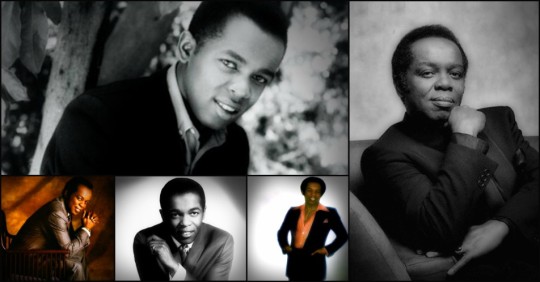

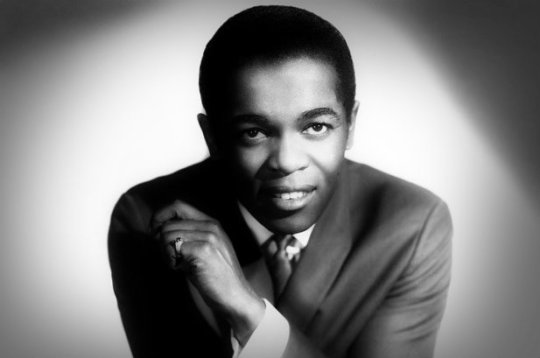
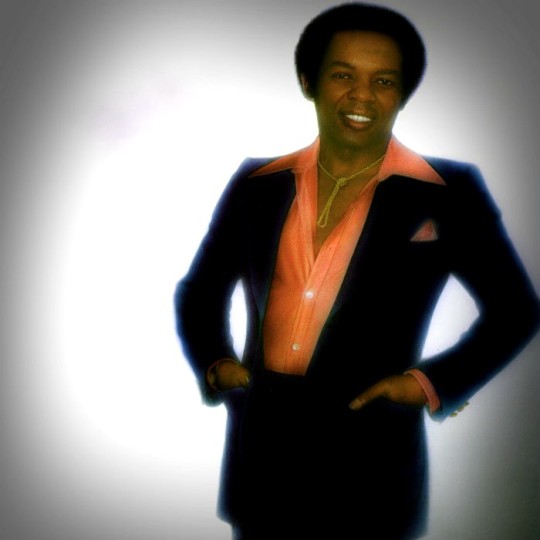
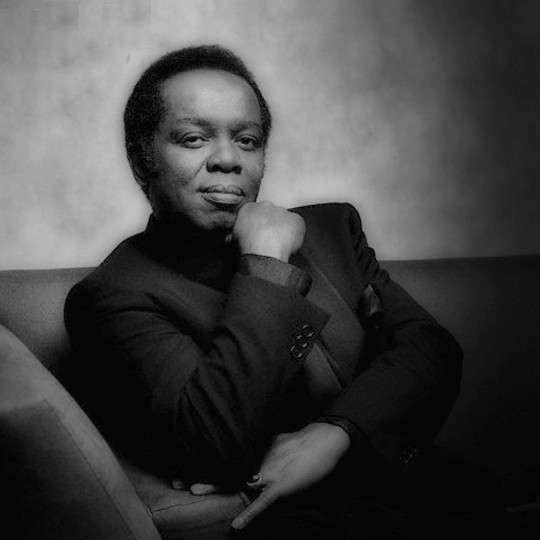
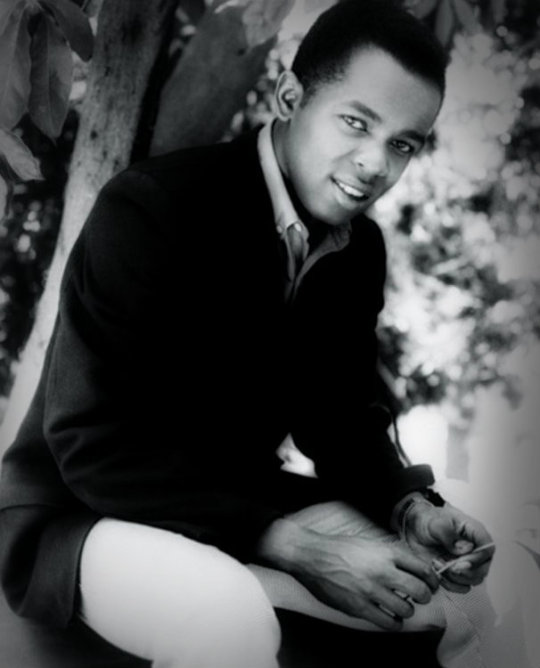
Louis Allen "Lou" Rawls (December 1, 1933 – January 6, 2006) was an American recording artist, voice actor, songwriter, and record producer. He is best known for his singing ability: Frank Sinatra once said that Rawls had "the classiest singing and silkiest chops in the singing game". Rawls released more than 60 albums, sold more than 40 million records, and had numerous charting singles, most notably his song "You'll Never Find Another Love Like Mine". He worked as a television, motion picture, and voice actor. He was also a three-time Grammy-winner, all for Best Male R&B Vocal Performance.
Career
Rawls was born in Chicago on December 1, 1933, and raised by his grandmother in the Ida B. Wells projects on the city's South Side. He began singing in the Greater Mount Olive Baptist Church choir at the age of seven and later sang with local groups through which he met future music stars Sam Cooke, who was nearly three years older than Rawls, and Curtis Mayfield.
After graduating from Chicago's Dunbar Vocational High School, he sang briefly with Cooke in the Teenage Kings of Harmony, a local gospel group, and then with the Holy Wonders. In 1951, Rawls replaced Cooke in the Highway QC's after Cooke departed to join The Soul Stirrers in Los Angeles. Rawls was soon recruited by the Chosen Gospel Singers and moved to Los Angeles, where he subsequently joined the Pilgrim Travelers.
In 1955, Rawls enlisted in the United States Army as a paratrooper in the 82nd Airborne Division. He left the "All-Americans" three years later as a sergeant and rejoined the Pilgrim Travelers (then known as the Travelers). In 1958, while touring the South with the Travelers and Sam Cooke, Rawls was in a serious car crash. Rawls was pronounced dead before arriving at the hospital, where he stayed in a coma for five and a half days. It took him months to regain his memory, and a year to fully recuperate. Rawls considered the event to be life-changing.
Alongside Dick Clark as master of ceremonies, Rawls was recovered enough by 1959 to be able to perform at the Hollywood Bowl. His first 2 single releases were 'Love, Love, Love' and 'Walkin' (For Miles') on Herb Alpert's Shar-Dee label in 1959-60, then 2 more in 1960-61 on Candix with 'In My Little Black Book' and '80 Ways'. He was signed to Capitol Records in 1962, the same year he sang the soulful background vocals on the Sam Cooke recording of "Bring It On Home to Me" and "That's Where It's At," both written by Cooke. Rawls himself charted with a cover of "Bring It On Home to Me" in 1970 (with the title shortened to "Bring It On Home").
Rawls' first Capitol solo release was Stormy Monday (a.k.a. I'd Rather Drink Muddy Water), a jazz album with Les McCann in 1962. The next two Capitol releases did well and used Onzy Matthews as the musical director along with a 17-piece big band; both these albums (Black and Blue, Tobacco Road) charted with Billboard and helped to propel him into the national spotlight as a recording artist.
Though his 1966 album Live! went gold, Rawls would not have a star-making hit until he made a proper soul album, appropriately named Soulin', later that same year. The album contained his first R&B #1 single, "Love Is a Hurtin' Thing". In 1967 Rawls won his first Grammy Award for Best R&B Vocal Performance, for the single "Dead End Street." In 1967, Rawls also performed at the first evening of the Monterey International Pop Music Festival.
In 1969, the singer was co-host of NBC's summer replacement series for the Dean Martin Show along with Martin's daughter, singer Gail Martin.
After leaving Capitol in 1971, Rawls joined MGM, at which juncture he released his Grammy-winning single "Natural Man" written for him by comedian Sandy Baron and singer Bobby Hebb. He had a brief stint with Bell Records in 1974, where he recorded a cover of Hall & Oates' "She's Gone." In 1976, Rawls signed with Philadelphia International Records, where he had his greatest album success with the million-selling All Things in Time. The album produced his most successful single, "You'll Never Find Another Love Like Mine", which topped the R&B and Adult Contemporary charts and went to number two on the pop side, becoming Rawls' only certified million-selling single in the process.
Subsequent albums, such as 1977's When You Hear Lou, You've Heard It All yielded such hit singles as "Lady Love". Other releases in the 1970s included the classic album Sit Down And Talk To Me.
Rawls' 1977 Grammy Awards performance of "You'll Never Find" was disrupted by a coughing fit.
In 1982, Rawls received a star on the Hollywood Walk of Fame.
He sang the lyrics to WGN-TV's 1983 "Chicago's Very Own" ad campaign, a slogan that the station still uses to this day.
The first African-American astronaut in history, Guion Bluford took the Lou Rawls album "When The Night Comes" (Epic records 1983) into space with him featuring the hit single "Wind Beneath My Wings". On January 19, 1985, he sang Wind Beneath My Wings at the nationally-televised 50th Presidential Inaugural Gala the day before the second inauguration of Ronald Reagan. He was introduced by Patricia Neal.
In 1989, he performed vocals for "The Music and Heroes of America" segment in the animated television miniseries This is America, Charlie Brown.
"The Star-Spangled Banner"
On the night of September 29, 1977, Rawls performed the national anthem of the United States prior to the Earnie Shavers-Muhammad Ali title fight at Madison Square Garden. He would be requested to sing the anthem many times over the next 28 years, and his final performance of it came in his hometown of Chicago. Rawls was asked to sing the national anthem to kick off Game Two of the 2005 World Series between the Chicago White Sox and Houston Astros at U.S. Cellular Field. A lifelong fan of his hometown Chicago White Sox and Chicago Bears, he was said to be "out of this world" thrilled and honored at the chance to sing the anthem and to see his boyhood south-side idols play in a World Series at the same time. Though tired, very ill, and seemingly knowing this could be one of his final performances, his rendition of The Star-Spangled Banner on the evening of October 23, 2005 is said to be one of the most moving performances of his career. He had also sung the national anthem at two previous World Series games and one NLCS (National League Championship Series) game: the 1982 World Series opener between the St. Louis Cardinals and Milwaukee Brewers and Game Three of the 1985 World Series between the Cardinals and the Kansas City Royals, and Game 6 of the 1987 NLCS between the Cardinals and the San Francisco Giants. All three games were played at Busch Memorial Stadium in St. Louis.
Honors and charity work
In 1980, Rawls began the "Lou Rawls Parade of Stars Telethon" which benefits the United Negro College Fund. The annual event, known since 1998 as "An Evening of Stars: A Celebration of Educational Excellence", consists of stories of successful African-American students who have benefited from and/or graduated from one of the many historically black colleges and universities who receive support from the UNCF, along with musical performances from various recording artists in support of the UNCF's and Rawls' efforts. The event has raised over US$200 million in 27 shows for the fund through 2006.
In January 2004, Rawls was honored by the United Negro College Fund for his more than 25 years of charity work with the organization. Instead of hosting and performing as he usually did, Rawls was given the seat of honor and celebrated by his performing colleagues, including Stevie Wonder, The O'Jays, Gerald Levert, Ashanti, and many others. His final television performance occurred during the 2005-2006 edition of the telethon, honoring Stevie Wonder in September 2005, just months before entering the hospital and after having been diagnosed with cancer earlier in the year. This program, aired in January 2006, contains his final public television performance, where he performed two classics, "You Are the Sunshine of My Life" and a final ode to Frank Sinatra with "It Was A Very Good Year".
At the time of Rawls' death, news and UNCF figures noted the significance of his final performance, "It Was a Very Good Year." The song is a retrospective of one's life and its lyrics include, "When I was seventeen, it was a very good year. It was a very good year for small town girls and soft summer nights.... And now those days grow short, it is the autumn of years, and now I think about life as vintage wine from fine old kegs, from the brim to the dregs, it pours sweet and clear, it was a very good year."
Acting career
Rawls appeared in a segment aired during the first season of Sesame Street, to sing the alphabet. He dismissed the concept of using cue cards for the performance, but reversed that decision when he forgot the order of the letters.
Throughout Rawls' singing career, he had the opportunity to appear in many films, television shows, and commercials. His first acting credit was in the western television series The Big Valley (starring Barbara Stanwyck, along with Lee Majors and Linda Evans). Here he delivered the memorable line, "Ain't a horse that can't be rode; ain't a man that can't be throwed." He can be seen in such films as Leaving Las Vegas, Blues Brothers 2000, and Angel, Angel, Down We Go. He had a role and sang some of his songs in Lookin' Italian, an independent mafia film. He had a supporting role in the Baywatch spin-off, Baywatch Nights. He guest-starred as a singer framed for and targeted for murder in a 1972 episode of Mannix.
Rawls lent his rich baritone voice to many cartoons, including Hey Arnold! as the voice of Harvey The Mailman, Garfield, Captain Planet and the Planeteers as the voice of Dr. Rice in the season 3 episode "Guinea Pigs", and The Proud Family (also appearing in animation form in one episode). For many of the Film Roman Garfield specials, Rawls would often compose songs for them, which he would then sing usually doing a duet with Desiree Goyette, as well as the singing voice of the title character himself.
For many years, he was a spokesperson for the Colonial Penn Life Insurance Company, helping promote the brand on radio and TV to African-American markets much as Ed McMahon did for the white audience (and Alex Trebek continues to do to this day). He was also a spokesman for brewing companies. First appearing in television and radio commercials in the mid-to-late 1960s for Spur Malt Liquor, a Rainier Brewing Company product out of Seattle, he later appeared in a number of Budweiser advertisements. Budweiser was a key sponsor for the Rawls telethon and UNCF. There was no attempt to avoid the similarity between the title of the 1977 album When You've Heard Lou, You've Heard It All and his corporate sponsor's slogan "When You Say Budweiser, You've Said It All". A track on the 1978 album Lou Rawls Live, features Rawls singing the commercial slogan. Anheuser-Busch, the brewers of Budweiser, also suggested his telethon work to him.
Rawls was also a regular guest host on "Jazz Central", a program aired on the BET Jazz cable channel.
He appears as "Dr. Rawls" in a dream on an episode My Wife and Kids in which he breaks into a parody version of "You'll Never Find Another Love Like Mine" when a frightened Damon Wayans is afraid of having a colonoscopy the following day. Rawls uses the scope as a microphone in the scene. Rawls appears as a commentator in the second half of both the rated and unrated versions of the commentary for Anchorman: The Legend of Ron Burgundy DVD commentary track, despite having nothing to do with the film itself. During the track, he indulges the commentators' request, participating in a scatting contest with Will Ferrell.
Rawls also appeared in an episode of Baywatch as a bookie as well as the pilot episode of The Fall Guy as Country Joe Walker.
Lou Rawls appears in action figure form in an episode of Action League Now!, entitled, "Hit of Horror".
Rawls was also a guest star during the second season of The Muppet Show. He also made an appearance on the series finale of Martin.
Billboard Top 50 hit singles
The following is a list of Rawls singles that made the top 50 on the Billboard Hot 100. His first Hot 100 entry was "Three O'Clock in the Morning" in 1965, and his final was "Wind Beneath My Wings" in 1983. In addition to those two, nine other singles peaked at positions below the top 50 on the Hot 100, and additional singles reached the R&B, Adult Contemporary and Bubbling Under charts.
"Love Is a Hurtin' Thing" - 1966, #13 (also #1 R&B)
"Dead End Street" - 1967, #29
"Show Business" - 1967, #45
"Your Good Thing (Is About to End)" - 1969, #18 (sold over one million copies and was awarded a gold disc)
"A Natural Man" - 1971, #17
"You'll Never Find Another Love Like Mine" - 1976, #2 (also #1 R&B and #1 Easy Listening); certified gold for sales of one million copies
"Lady Love" - 1978, #24
Personal life
On December 19, 2005, the Associated Press reported that Rawls tried to annul his two-year marriage to Nina Inman, who had been acting as his business manager, after it was discovered she had made unauthorized transfers amounting to nearly $350,000 from his bank account into an account solely controlled by her. She later stated that she had transferred the funds to protect them from one of Rawls' daughters from a previous relationship.
In December 2005, it was announced that Rawls was being treated for cancer in both his lungs and brain. With his wife of two years by his side, Lou Rawls died from his illness on January 6, 2006, at Cedars-Sinai Medical Center in Los Angeles, California.
Rawls had one son with Inman, Aiden Allen Rawls. He also fathered two daughters: Louanna Rawls, a wardrobe stylist and future Launch My Line contestant, and Kendra Smith, as well as a prior son, Lou Rawls, Jr.
In 2009, Pathway Entertainment announced its intention to feature Rawls as the subject of a biopic, tentatively titled Love Is a Hurtin' Thing: The Lou Rawls Story. Rawls' son, Lou Rawls, Jr., is the author of the script. Isaiah Washington will reportedly play Rawls.
Discography
Albums
1962 Stormy Monday (Blue Note)
1962 Black and Blue (Capitol)
1963 Tobacco Road (Capitol)
1964 For You My Love (Capitol)
1965 Lou Rawls and Strings (Capitol)
1965 Nobody But Lou (Capitol)
1966 Live! (Capitol)
1966 The Soul-Stirring Gospel Sounds of the Pilgrim Travelers (Capitol)
1966 Soulin' (Capitol)
1966 Carryin' On (Capitol)
1967 Too Much! (Capitol)
1967 That's Lou (Capitol)
1967 Merry Christmas Ho! Ho! Ho! (Capitol)
1968 Feelin' Good (Capitol)
1968 You're Good for Me (Capitol)
1969 The Way It Was: The Way It Is (Capitol)
1969 Your Good Thing (Capitol)
1969 Close-Up (Capitol)
1970 You've Made Me So Very Happy (Capitol)
1970 Bring It On Home (Capitol)
1971 Down Here on the Ground/I'd Rather Drink Muddy Water (Capitol)
1971 Natural Man (MGM)
1972 Silk & Soul (MGM)
1972 A Man of Value (MGM)
1973 Live at the Century Plaza (Rebound)
1975 She's Gone (Bell)
1976 All Things in Time (Philadelphia International)
1976 Naturally (Polydor)
1977 Unmistakably Lou (Philadelphia International)
1977 When You Hear Lou, You've Heard It All (Philadelphia International)
1978 Lou Rawls Live (Philadelphia International)
1979 Let Me Be Good to You (Philadelphia International)
1979 In Concert: Recorded with the Edmonton Symphony Orchestra [live] (Dep Entertainment)
1980 Sit Down and Talk to Me (Philadelphia International)
1981 Shades of Blue (Philadelphia International)
1982 Now Is the Time (Epic)
1983 When the Night Comes ( Epic)
1984 Close Company (Epic)
1986 Love All Your Blues Away (Epic)
1988 Family Reunion (Gamble-Huff)
1989 At Last (Blue Note)
1990 It's Supposed to Be Fun (Blue Note)
1992 Portrait of the Blues (Capitol)
1993 Christmas Is the Time (Manhattan)
1995 Holiday Cheer (Cema Special Markets)
1995 Merry Little Christmas (EMI Special Products)
1998 Unforgettable (Going For)
1998 Seasons 4 U (Rawls & Brokaw)
1999 A Legendary Night Before Christmas (Platinum Disc)
2000 Swingin' Christmas (EMI-Capitol Special Markets)
2001 I'm Blessed (Malaco)
2001 Christmas Will Be Christmas (Capitol)
2002 Oh Happy Day (601)
2003 Rawls Sings Sinatra (Savoy Jazz)
2003 Trying as Hard as I Can (Allegiance)
2006 Lou Rawls Christmas (HyLo Entertainment)
Chart singles
Filmography
2000 Jazz Channel Presents Lou Rawls (Image)
2003 In Concert (BMG/Image)
2005 Prime Concerts: In Concert with Edmonton Symphony (Amalgamated)
2006 The Lou Rawls Show: With Duke Ellington & Freda Payne
2007 Live in Concert: North Sea Jazz. 1992-1995 (E-M-S)
Wikipedia
46 notes
·
View notes
Text
How The Media Overlooked Michael Jackson’s Alleged Sexual Abuse
This post was originally published on this site
A few months after the King of Pop faced his first public sexual abuse allegations, Vanity Fair reporter Maureen Orth wrote in January 1994 that “even by Hollywood standards, Michael Jackson’s weirdness is legendary, but he has always been protected by the armor of his celebrity.”
“Almost no one, especially those C.E.O.’s and moguls who make millions off him, has ever really questioned his motives: why this reclusive man-child with no known history of romantic relationships prefers to live a fantasy life in the company of children,” Orth wrote of Jackson, who later privately settled with accuser Jordan Chandler.
At its core, HBO’s “Leaving Neverland” is a devastating and searing excavation of how sexual abuse can tear apart the lives of accusers and their families. But particularly in its second half, airing Monday night, the documentary hints at how Jackson’s otherworldly superstardom enabled his alleged abuse to evade major scrutiny from the media during much of his career.
As with many sexual misconduct cases, media outlets faced the challenge of corroborating the allegations against Jackson. According to Orth’s 1994 article, some saw them as too salacious to cover.
Orth went on to detail how people often took their stories about Jackson to the tabloids because they would get paid by “the profitable and ever growing celebrity-gossip mill.” Reputable outlets such as The New York Times and Los Angeles Times didn’t extensively cover Chandler’s allegations in 1993, and when they did, they instead focused on the response from Jackson’s team, who claimed the singer had been extorted.
“A lot of people simply did not want to believe that Michael Jackson could molest little boys, and the tepid Establishment-press coverage reflected the public’s repugnance and ambivalence,” Orth wrote.
Jackson, who died in 2009, was the product of a machine of celebrity mythmaking, in which reporters, fans, and the people in his orbit ― including “Leaving Neverland” accusers Wade Robson and James Safechuck and their families ― became sometimes unwitting participants.
I love children and learn so much from being around them. I realize that many of our world’s problems today ― from the inner-city crime, to large-scale wars and terrorism, and our overcrowded prisons ― are a result of the fact that children have had their childhood stolen from them. Michael Jackson, 1993
A look at media coverage of Jackson from the 1980s and early 1990s shows how that machine may have made it easier for the world to look the other way.
With the help of a savvy team of handlers who went after his critics, Jackson controlled his image.
Jackson, who denied the multiple abuse charges made during his lifetime and was acquitted after a 2005 trial, had plenty of defenders who thought the accusations were intended to take him down. A GQ cover story in 1994 opined over whether he had been “framed,” calling the coverage of the 1993 allegations “one of the nation’s worst episodes of media excess.”
Diane Dimond, a reporter for the TV tabloid show “Hard Copy,” broke the story on the initial allegations in 1993, but discovered sources close to Jackson had either been instructed not to talk or “wanted money.”
“They say, ‘I’d like to tell you something about Michael. He’s a dear sweet boy, and for $5,000 I’ll come on and tell you this.’ It absolutely has impeded me from presenting a full Jackson side of the story,” she said in 1994.
According to Vanity Fair, she received threats from Jackson’s representatives (which they denied). Dimond later wrote that fans attacked her outside her office, someone broke into her car on one occasion, and ”my office phone was tapped by Jackson’s private detective (confirmed to me by FBI sources),” she said in 2005.
Peter Still via Getty Images Michael Jackson performing with children during his 1988 “Bad” tour.
Jackson contributed to his “squeaky-clean image” and universal appeal by giving few interviews and steering news reports toward his wide range of charity work involving children.
Jackson exerted power over his image and largely avoided interviews, as noted in a 1987 Rolling Stone profile that detailed “his control mania.” Director Steven Spielberg ― who cast Jackson as the narrator for the soundtrack to “E.T.” ― told the magazine in 1983 that the singer was “one of the last living innocents who is in complete control of his life.”
When Jackson did agree to the rare interview, it was often connected to his philanthropy and took on a sympathetic tone, like a 1992 Ebony magazine profile, which argued that Jackson had faced “a negative media campaign.”
ASSOCIATED PRESS Michael Jackson and his then-wife Lisa Marie Presley, giving children a tour of his Neverland ranch in 1995.
Many of the charitable initiatives that morphed his public image involved assisting sick children. Some were invited to spend time at his Neverland Ranch, where he hosted sleepovers — during which some of the alleged sexual abuse occurred.
“It’s part of my gift to make everybody happy, and to bring joy to everyone, especially children like this,” Jackson told Newsday in 1989, when meeting then 4-year-old leukemia patient Darian Pagan at a hospital in Brooklyn, New York. “My dream is to do a tour and see all the world’s children, all the hungry kids. Imagine that.”
Jackson often surrounded himself with children during his public appearances. During a 1985 PBS Newshour segment on Jackson’s famous Pepsi commercials, marketing analyst Faith Popcorn remarked on why children were among the singer’s biggest fans.
“All the young people emulate Michael Jackson in this country,” she said, according to a transcript of the segment. “And it must be every young boy’s fantasy to turn around and see Michael Jackson. I mean, how wonderful.”
Two years later, one of Jackson’s commercials starred then-9-year-old Safechuck turning around in amazement when seeing Jackson in his dressing room.
Profiles of Jackson often cast a tone of fascination and curiosity, writing off questionable behavior as mostly innocuous “personal oddities” or “eccentricities.”
News coverage in the 1980s and early 1990s often described Jackson as “child-like,” “wide-eyed,” “innocent,” an “enigma,” a “recluse” or a “Pied Piper.”
Certain stories made passing references to the sleepovers at Neverland and how many of his friends were children, details that look eerie now. A 1992 Rolling Stone feature described Jackson’s bizarre retreats for kids:
Jackson frequently has children over to play. According to his personal spokesperson, Bob Jones (who first worked with Jackson at Motown when the singer was a member of the Jackson 5), these regularly include “busloads” of underprivileged and terminally ill kids (such as the late Ryan White), as well as young personal friends of the superstar.
“When the children are here, sometimes they get so excited they just can’t go to sleep,” says Lee Tucker, who helped design Jackson’s movie theater and serves as his projectionist. “I’ll get a call at 2:00 a.m. sometimes: ‘Lee, can you show such-and-such movie?’ Neverland isn’t about kids going to sleep at a certain time. The kids really run the place when they’re here.”
In some news reports from that time, Robson was described as one of Jackson’s “young friends,” and Safechuck as his “new little friend.”
New York Daily News Archive via Getty Images James Safechuck (right), then 10, with Michael Jackson and Liza Minnelli in 1988. The original photo caption refers to Safechuck as Jackson’s “new friend.”
News coverage also emphasized how he liked being around children because he did not have his own childhood.
Jackson frequently told reporters that he felt most comfortable around children because he related to them more than he did with adults.
“They don’t wear masks,” he told Rolling Stone in 1983.
Similarly, the 1992 Rolling Stone profile noted:
Jackson is extremely fond of children. Those who know him believe that one reason he can relax with kids is that he truly believes they like him for himself, not because he’s a big star. As one associate observed, “If you’re under three feet tall, you can have complete access to Michael Jackson.”
He and his defenders often attributed some of his behavior to the fact that he had been famous his entire life and lived in a lonely bubble.
“With Michael, as with any superstar, reality and fantasy are totally confused,” John Landis, who directed Jackson’s “Thriller” music video, said in 1992. “It’s very difficult to remain sane.”
Also cited was his difficult childhood, including alleged physical abuse from his notoriously controlling father, which Jackson discussed at length with Oprah Winfrey in a 1993 live TV interview. But that defense is full of complications. As Slate’s Daniel Engber wrote this week, “the theory of intergenerational transmission of abuse” is a complex claim because “the science is filled with too many nuances and caveats to allow such a clear-cut explanation.”
These stories often referred to Jackson having dual images: one as an otherworldly superstar and unparalleled performer, the other as a tabloid fascination.
“I think he’s really Peter Pan,” his choreographer Michael Peters told the New York Times in 1984. “He is this constant dichotomy of man and child. He can run corporations and tell record companies what he wants, and then he can sit in a trailer and play Hearts for hours with a friend who is 12 years old.”
“As an entertainer he has no peer,” Rolling Stone wrote in 1987, while also noting that Jackson simultaneously was “the flighty-genius star-child, a celebrity virtually all his life, who dwells in a fairy-tale kingdom of fellow celebrities, animals, mannequins and cartoons … ”
Tabloid stories about “his plots to buy the Elephant Man’s remains, to oxygenate his body by sleeping in a hyperbaric chamber or to marry Elizabeth Taylor” further cemented that image.
While Jackson denounced these stories as “completely made up,” notably in the Oprah interview that was designed to rehabilitate his image, some reports suggest that the rumors (which led to the “Wacko Jacko” moniker in the tabloids) may have been planted by himself or his representatives.
In February of 1993, just weeks after the Oprah interview and months before Chandler made his allegations, Jackson was awarded the Grammy Legend Award. His acceptance speech now reads as a chilling summary of all of his different defenses promulgated over the years.
“I wasn’t aware that the world thought I was so weird and bizarre. But when you grow up as I did, in front of 100 million people since the age of 5, you are automatically different,” he said. “My childhood was completely taken away from me. There was no Christmas, there was no birthdays. It was not a normal childhood, no normal pleasures of childhood. Those were exchanged for hard work, struggle and pain.”
Jackson went on to thank “all the children of the world, including the sick and deprived.”
“I love children and learn so much from being around them,” he said. “I realize that many of our world’s problems today ― from the inner-city crime, to large-scale wars and terrorism, and our overcrowded prisons ― are a result of the fact that children have had their childhood stolen from them.”
Need help? Visit RAINN’s National Sexual Assault Online Hotline or the National Sexual Violence Resource Center’s website.
RELATED COVERAGE
The post How The Media Overlooked Michael Jackson’s Alleged Sexual Abuse appeared first on The Chestnut Post.
from The Chestnut Post https://thechestnutpost.com/news/how-the-media-overlooked-michael-jacksons-alleged-sexual-abuse/
1 note
·
View note